The Most Historic Location in Every State

Maybe history wasn’t your favorite subject in school. Your teacher might have spoken in a droning monotone, or worse: he or she might have spoken in a droning monotone and required you to memorize an impossibly long string of dates. If that was your situation, we’d like to extend our apologies, because the reality is that our (relatively) young nation is steeped in a tremendous amount of incredibly fascinating history. And if you dial in on a micro level, you’ll find that each state possesses its own unique claim to a location that shaped America’s history.
From the fort that inspired Francis Scott Key to write our national anthem to the surprisingly still-intact remains of ancient southwestern pueblos to the exact coordinates where the “shot heard ’round the world” rang out, not one state has been left behind. Herein, we’ve pinpointed the precise location—in all 50—that has been instrumental in making our nation “the land of the free and the home of the brave.” No matter how you felt about your high school U.S. history class, we promise you’ll be impressed (and may even feel your heartstrings tug with patriotic pride). And to bone up on some important events from America’s more recent history, don’t miss 30 Things in History Textbooks That Weren’t There Just 10 Years Ago.
1
Alabama: 16th Street Baptist Church
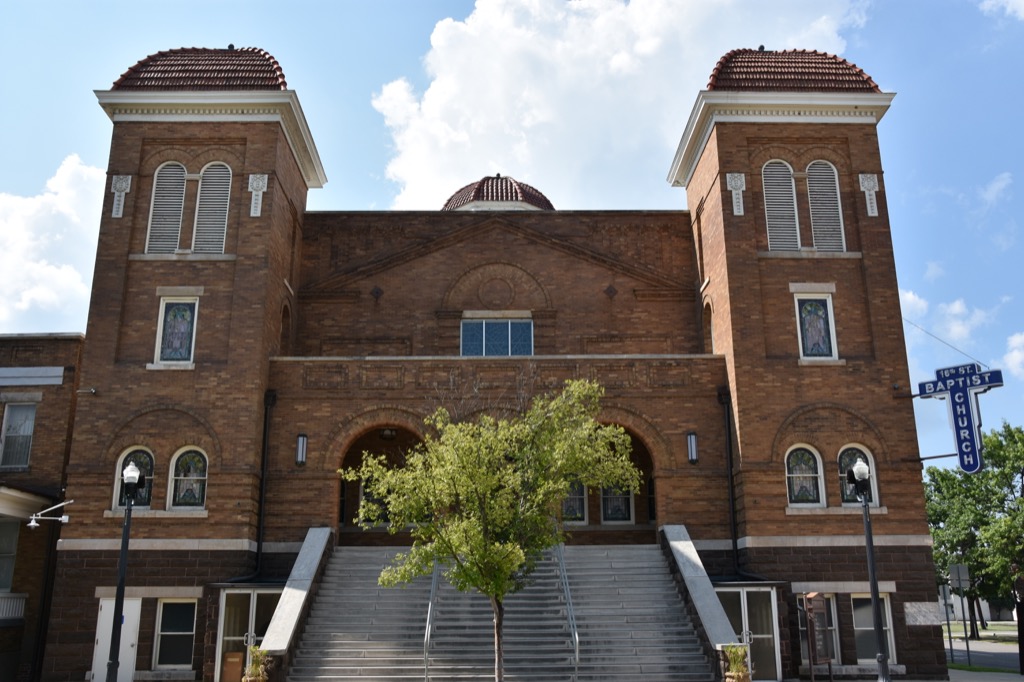
In the midst of Sunday School lessons on September 15, 1963, the Ku Klux Klan bombed the 16th Street Baptist Church (Birmingham’s first African-American church), killing four young girls and forever memorializing this building as a sobering icon of the Civil Rights movement. And to learn more about several important players from that part of time, don’t miss 20 Lesser-Known Civil Rights Figures You Need to Know About.
2
Alaska: Castle Hill
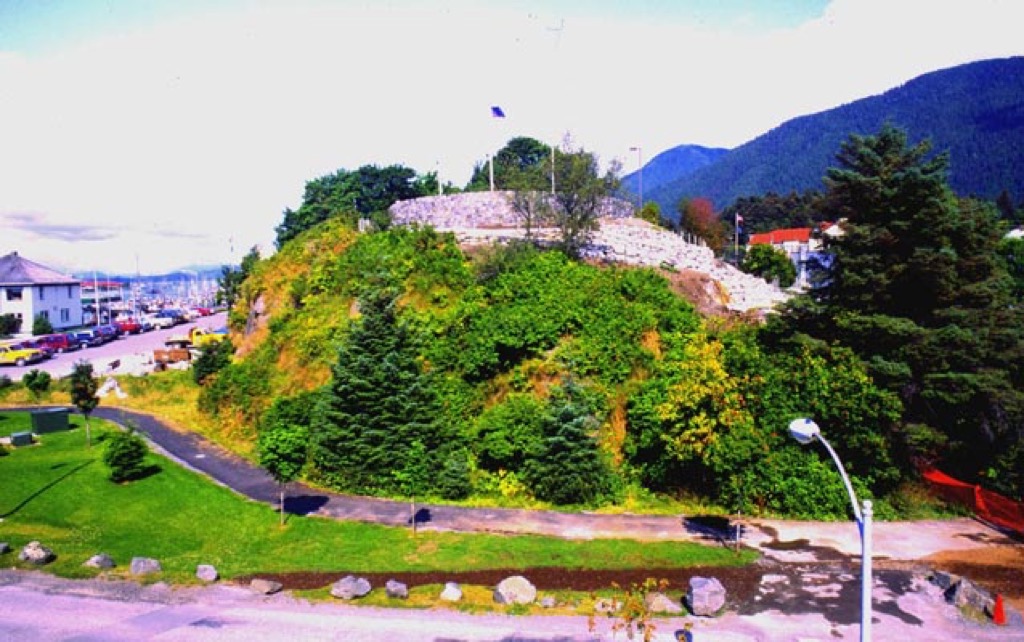
Sitka’s Castle Hill has witnessed two historic flag raising rituals. The first was in 1867, when the United States officially acquired the Alaskan territory from Russia. The second was in 1959, when Alaska officially became the nation’s 49th state and celebrated by hoisting a 49-star banner. And for the inside scoop on the truth about the Star Spangled Banner, check out The 40 Most Enduring Myths in American History.
3
Arizona: Wupatki National Monument
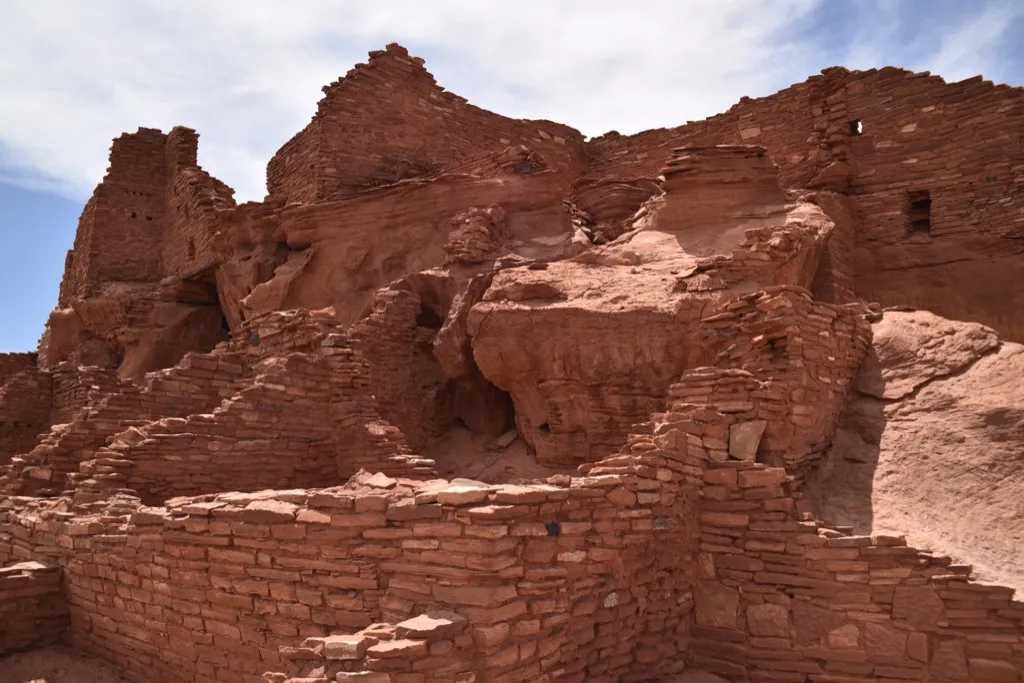
Located in the desert near modern-day Flagstaff, these sturdy red rock pueblos built by Arizona’s native peoples are thought to date as far back as the 11th century, making the national monument an impressive preservation of centuries-old culture. And to learn about other awe-inspiring locations in our nation, don’t miss 50 Destinations So Magical You Won’t Believe They’re in the U.S.
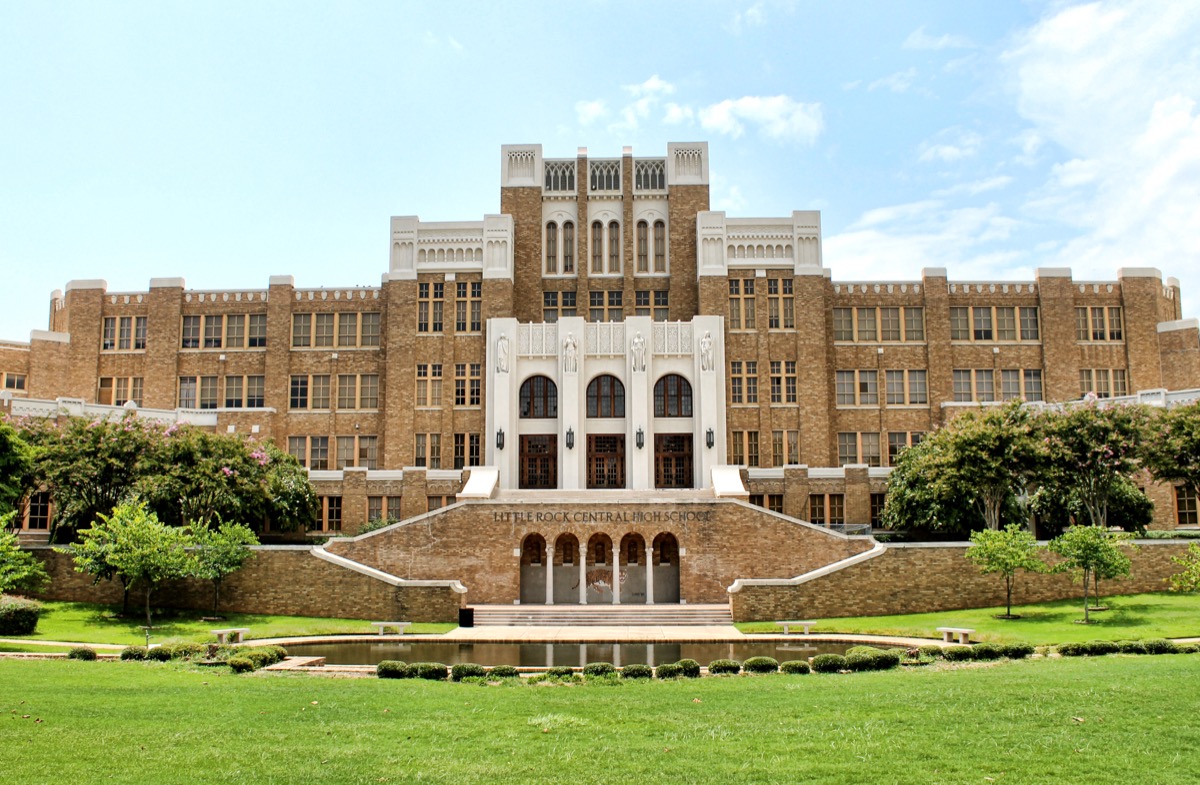
4
Arkansas: Little Rock Central High School
In an unprecedented move that would set the standard for the Civil Rights movement of the coming decade, Little Rock Central High School became, thanks to no-nonsense President Dwight D. Eisenhower, the nation’s very first public school to implement desegregation following the landmark Supreme Court Brown v. Board of Education decision. Nine African-American students, now known to history as the Little Rock Nine, were escorted into the previously all-white school by members of the 101st Airborne Division in 1957.
5
California: Alcatraz Island
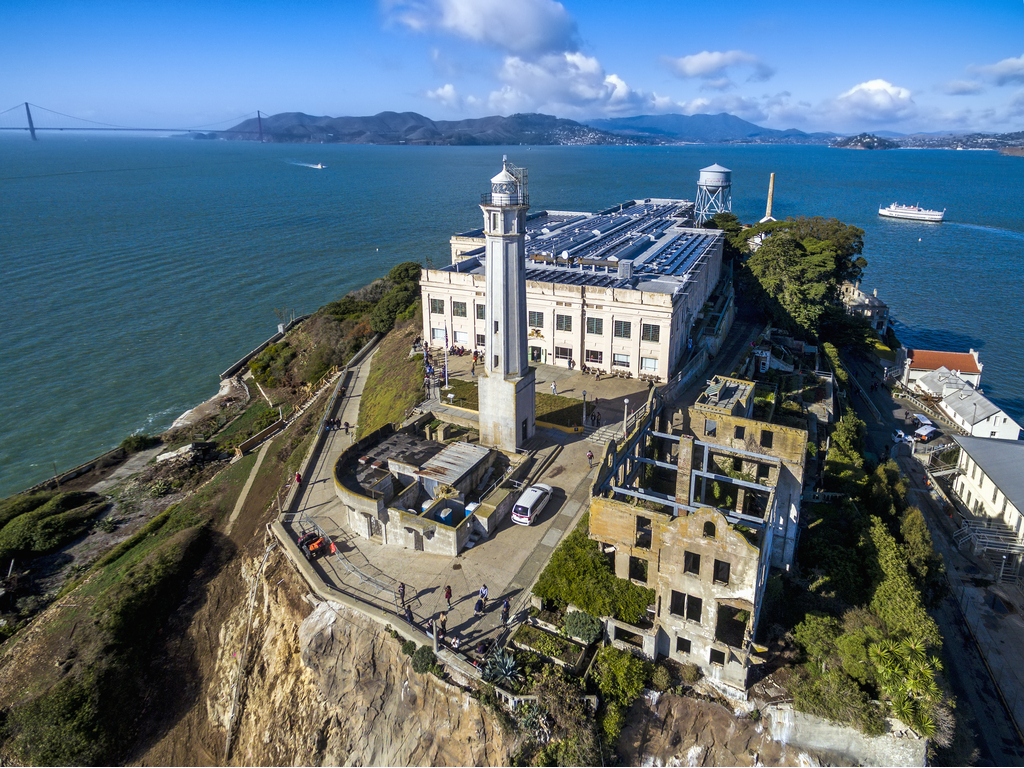
Best known for housing the federal prison containing some of the most notorious crooks of the mid-nineteenth century (perhaps most notably gangster Al Capone), Alcatraz Island has actually been a sort of historical jack-of-all trades, once serving as a military fort and later as the site of an 18-month demonstrative occupation by multiple Native American tribes.
6
Colorado: Mesa Verde National Park
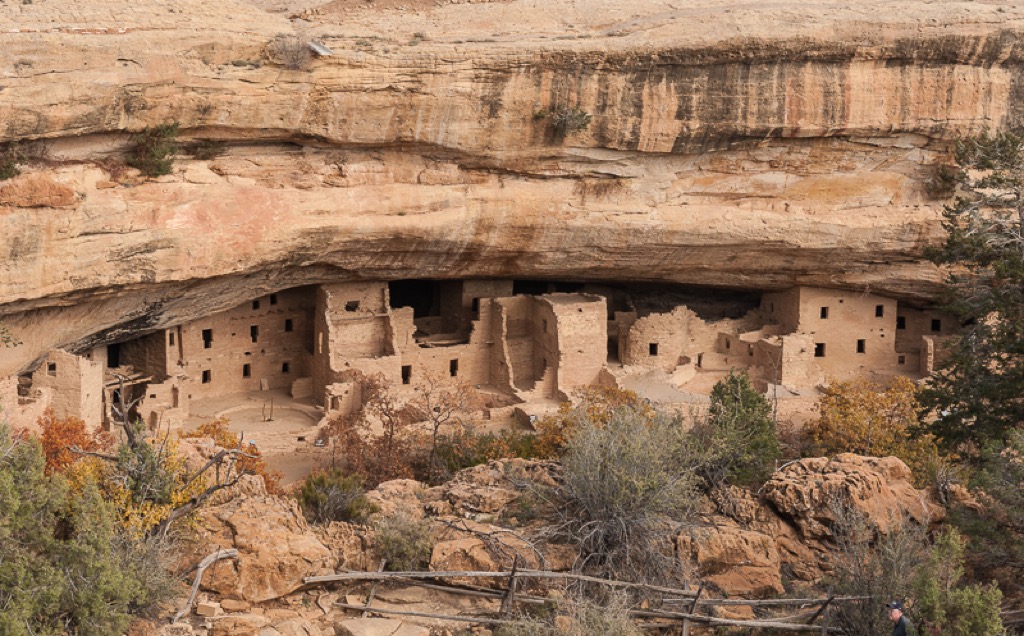
Akin to Arizona, Colorado’s Mesa Verde contains over 600 Pueblan cliff dwellings. The area offers a tremendous amount of insight into the lives of the region’s ancient peoples; according to the National Park Service, the national park is among the best preserved archaeological sites in the United States.
7
Connecticut: Harriet Beecher Stowe’s House
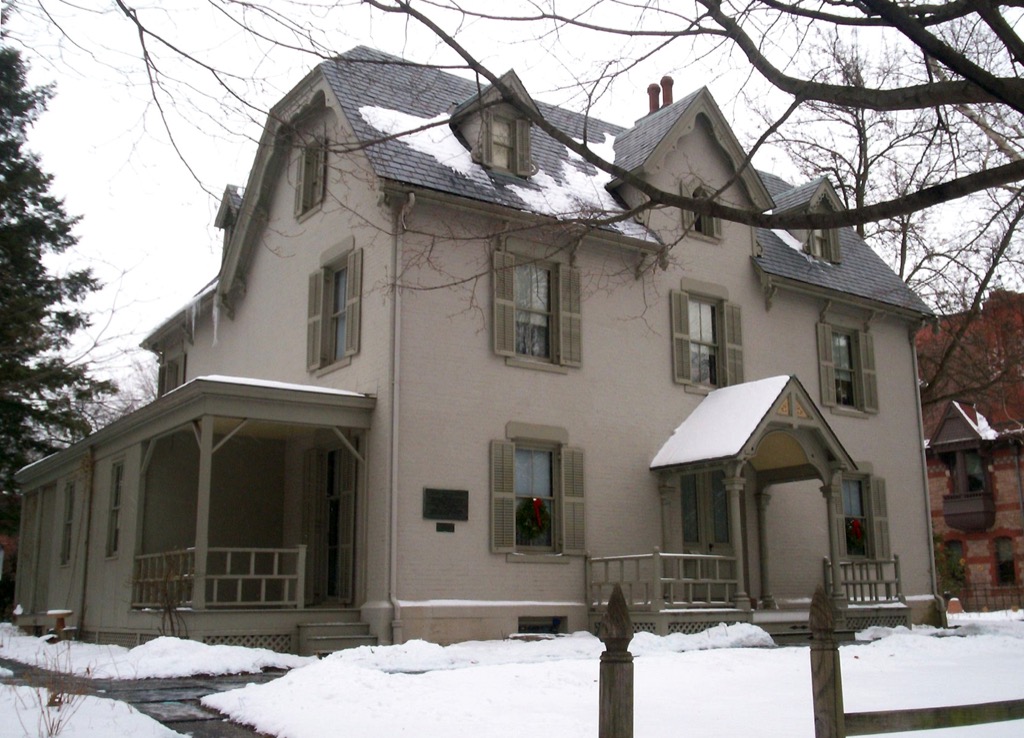
Novelist Harriet Beecher Stowe, best known for penning the 1852 abolitionist novel Uncle Tom’s Cabin, which laid bare the cruelties of slavery, resided in this Hartford house for the final 23 years of her life. The house has since been converted into a center dedicated to keeping Stowe’s memory alive and promoting social justice causes.
8
Delaware: Mason-Dixon Marker
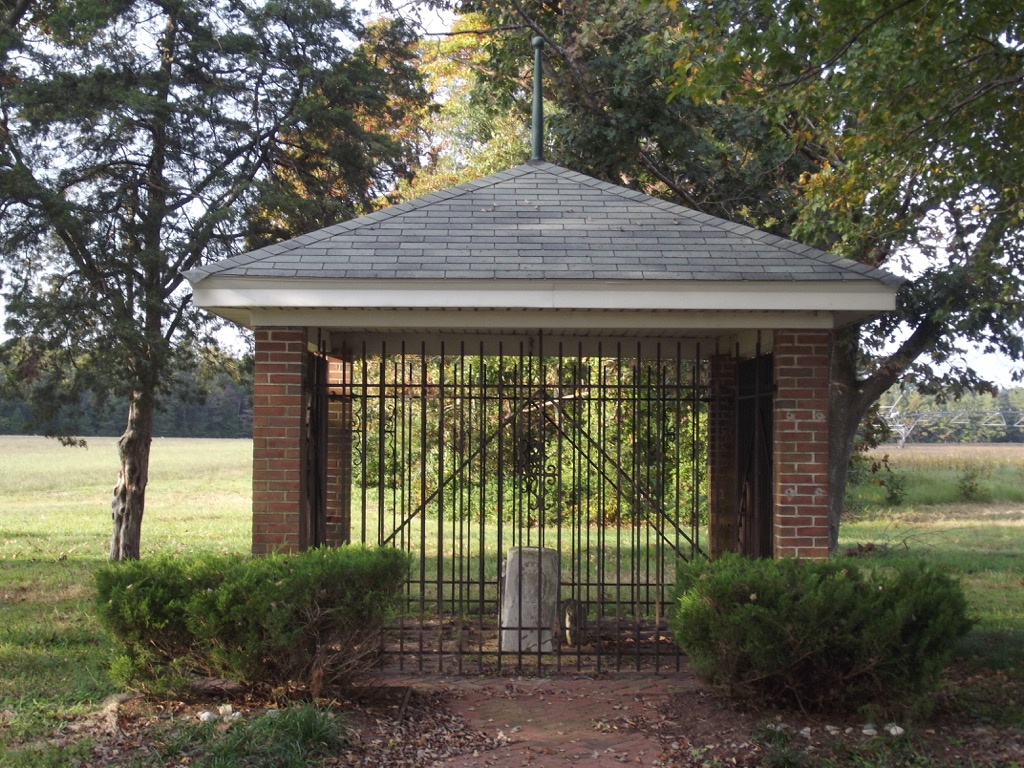
Visit the town of Delmar (a clever portmanteau of “Delaware” and “Maryland”; the town rests on the border between the two states) to see the Number One marker of the monumental Mason-Dixon Line with your own eyes. Although initially drawn by surveyors Charles Mason and Jeremiah Dixon to settle the dispute about the colonial boundaries between Pennsylvania and Maryland, the true gravity of the Mason-Dixon Line would come into play later in our nation’s history, when it effectively served as the dividing point between the Northern and Southern states during the Civil War.
9
Florida: Cathedral of St. Augustine
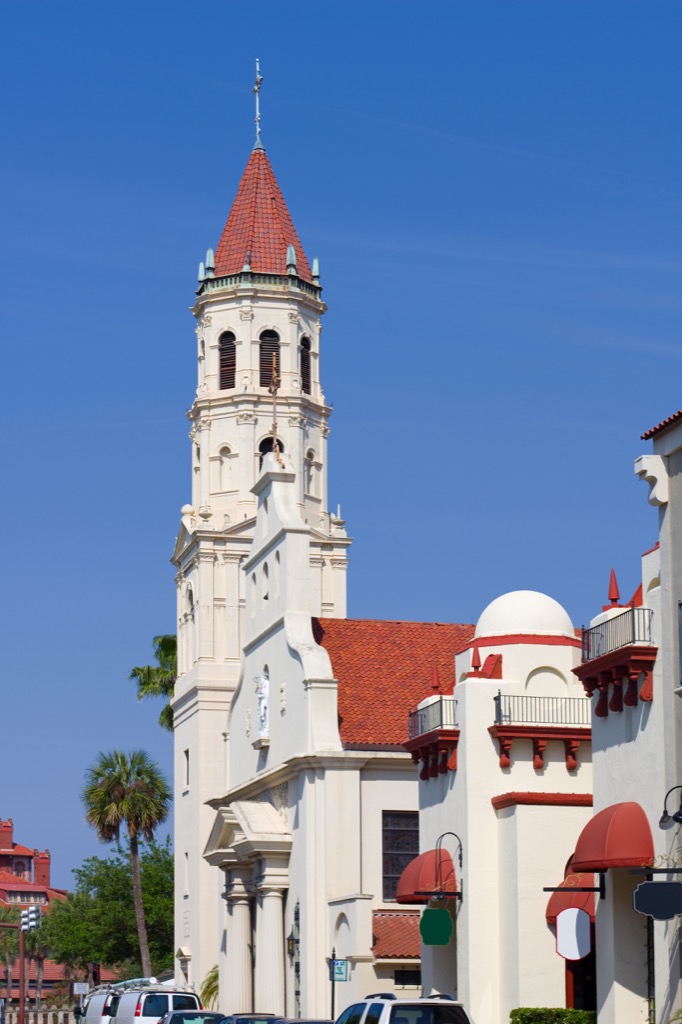
America’s first and oldest permanent parish church was founded by Spanish missionaries in St. Augustine, Florida, with one of the envisioned goals being to convert the area’s Native Americans to Catholicism. Though the original building has weathered many tribulations since 1565, including fires and pillaging, services continue to be held in the restored cathedral.
10
Georgia: Jefferson Davis Memorial Historic Site
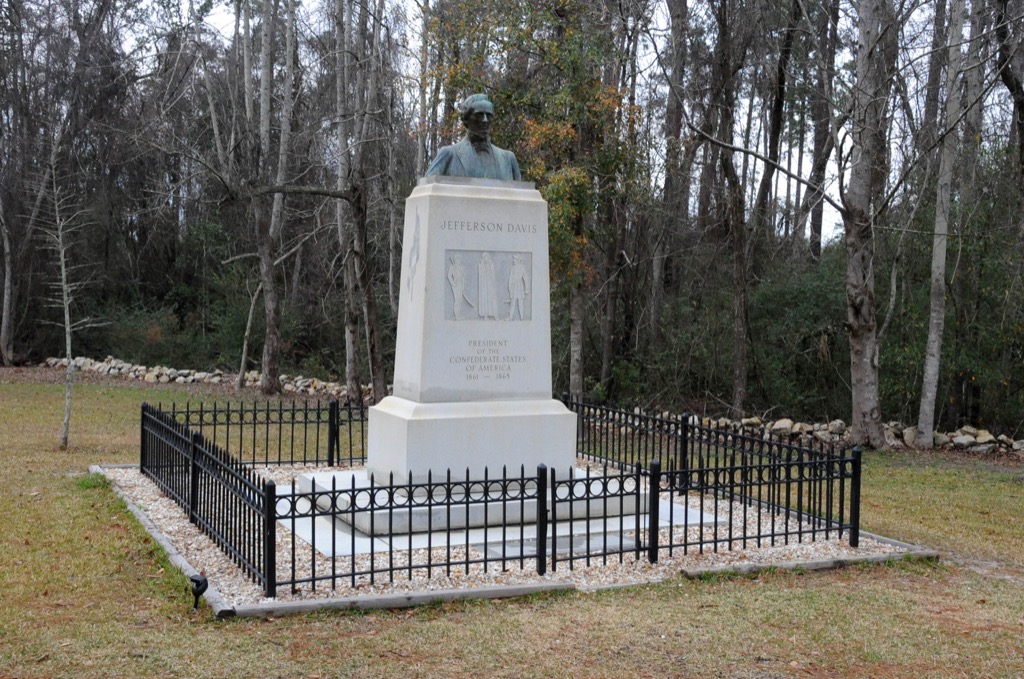
This memorial in Fitzgerald marks the very ground where Confederate president Jefferson Davis was finally captured by Union forces in May 1865, effectively bringing the Civil War to a grinding halt. Following the war, Davis was imprisoned at Fort Monroe, Virginia, for two years, before being quietly released without a trial. (Apparently, the government was afraid a trial would stir up too much contention and break open the country’s newly healing wounds.)
11
Hawaii: Pearl Harbor
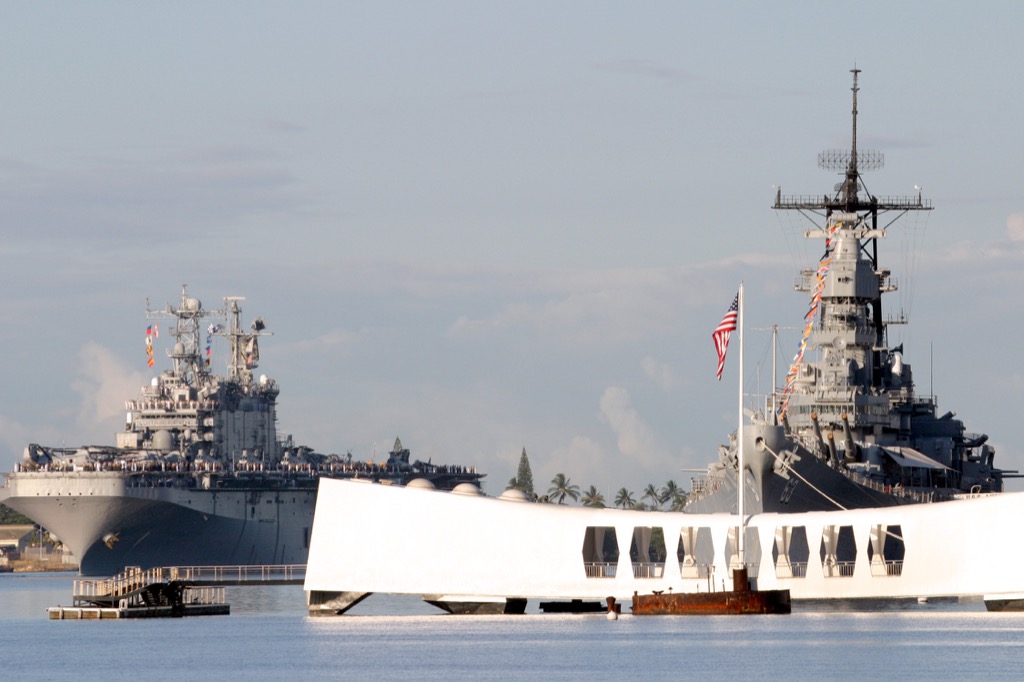
In solemn tribute to the lives lost during Japan’s December 7, 1941, attack on Pearl Harbor, both the “Gathering Place” and the USS Arizona Memorial, on Oahu Island, pay homage to the catastrophic loss (2,403 U.S. sailors and civilians and ten U.S. Navy vessels) that launched the United States into World War II.
12
Idaho: Bear River Massacre Historical Site
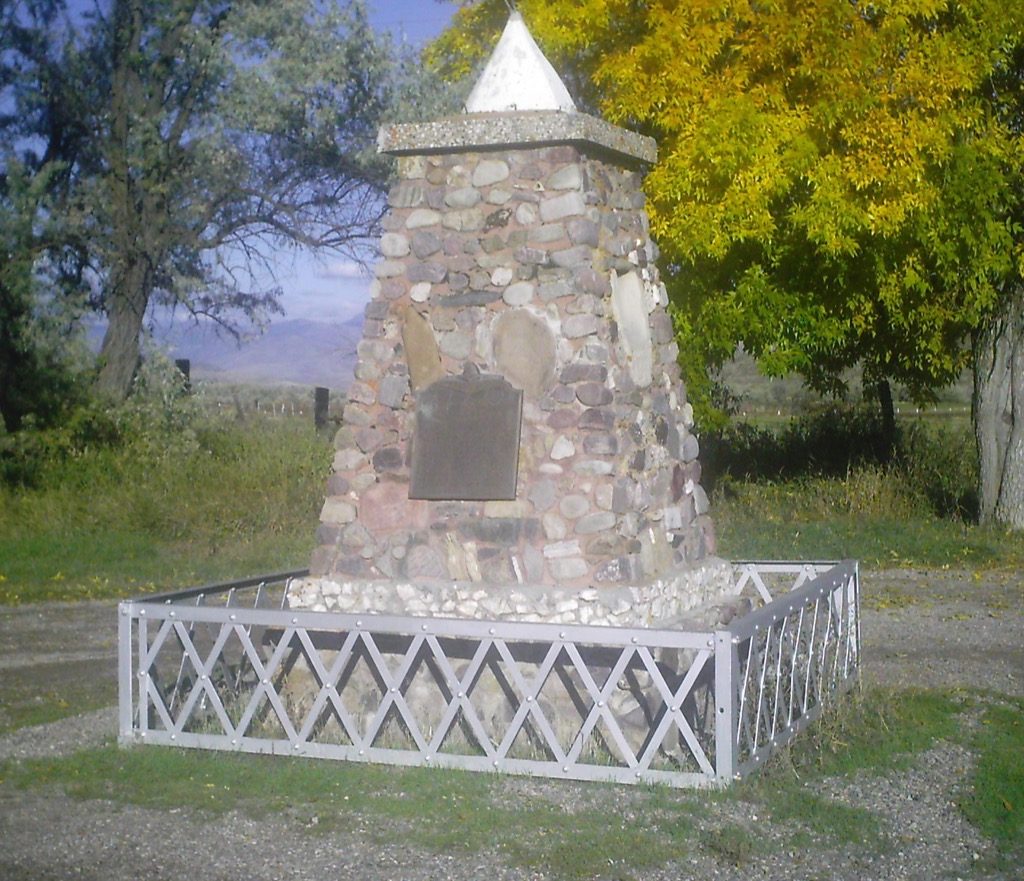
Alleged to be the site that experienced the single greatest amount of Native American bloodshed in our nation’s history, the Bear River Massacre resulted in the death of approximately 250 Shoshone men, women, and children. Nearby Fort Douglas settlers ransacked and slaughtered the Shoshone tribe, supposedly in retaliation for raids on their own community. Today, commemorative markers and small bundles of feathers and cloth are scattered across the quiet field in memoriam of the 1863 massacre.
13
Illinois: Lincoln Home National Historic Site
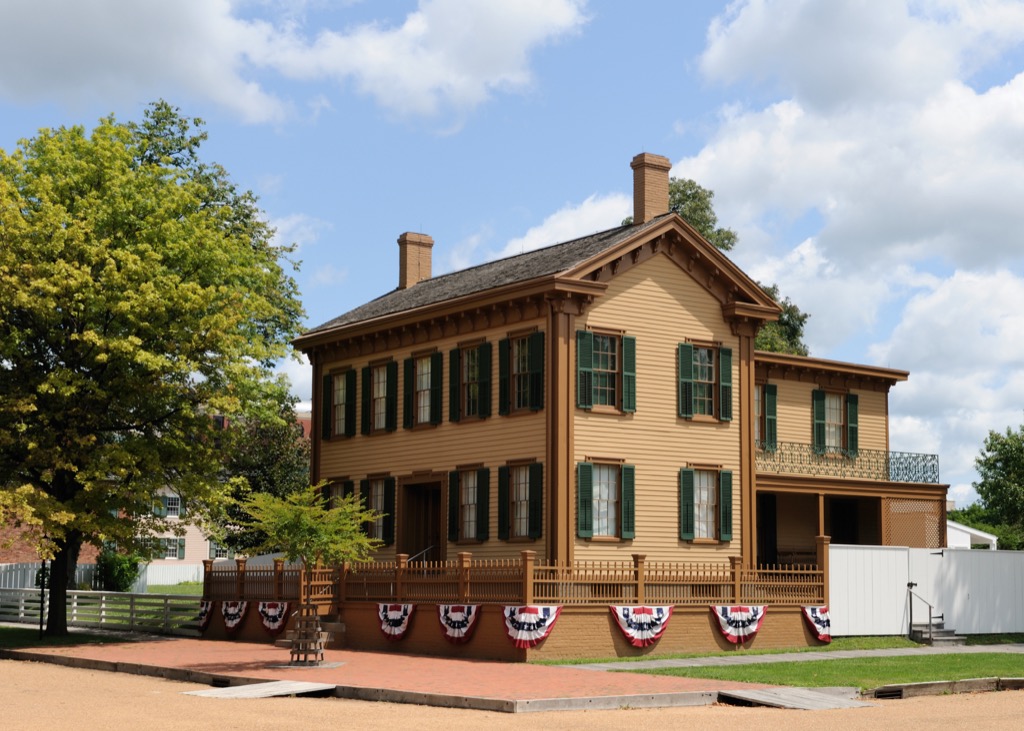
Step back into history and visit this modest but cozy neighborhood in Springfield, which was home to Abraham Lincoln and his family from 1844 right up until 1861, when their address became 1600 Pennsylvania Avenue (which you’ll know as the White House). And for info on the exalted residents of our nation’s most famous home, don’t miss the 30 Craziest Things U.S. Presidents Have Done.
14
Indiana: Tippecanoe Battlefield Park
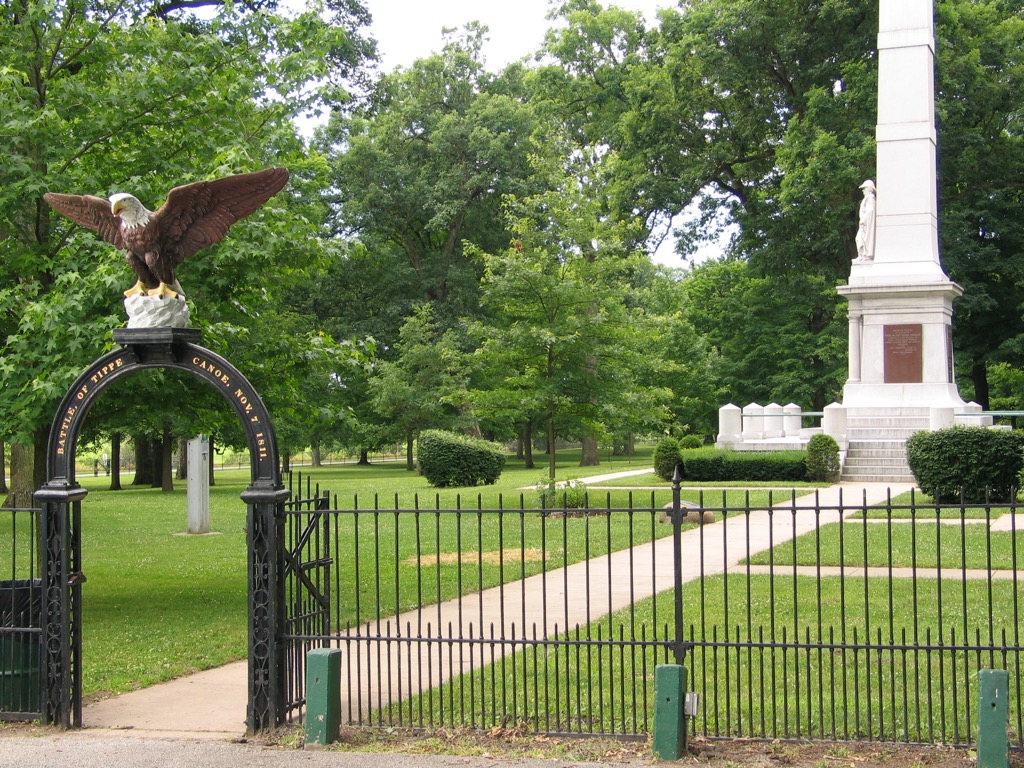
The site of the 1811 battle between American colonists and an alliance of Native Americans led by Shawnee brothers Tecumseh and “The Prophet,” the Tippecanoe battleground (so named for the nearby Tippecanoe River) is now preserved as a site of reflection.
15
Iowa: Sergeant Floyd Monument
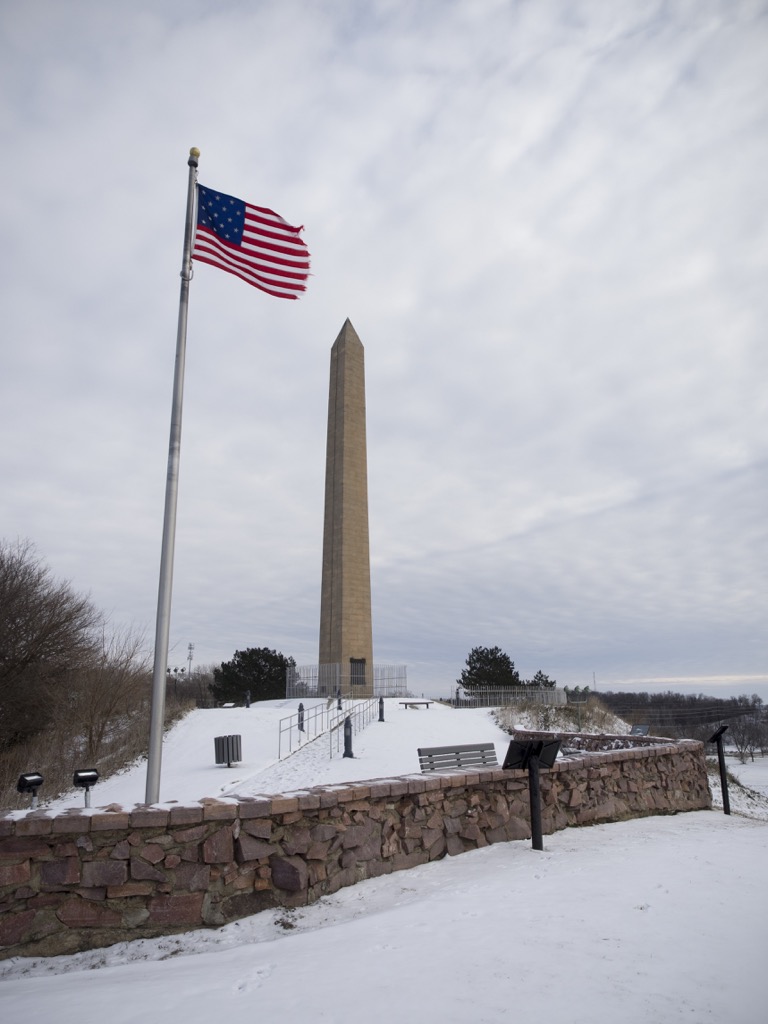
Bearing the distinction of being the country’s first registered National Historic Landmark, this stately stone obelisk, located near Sioux City, pays tribute to the resting place of explorer and sergeant Charles Floyd, who died (of what was later thought to be appendicitis) during the famed Lewis and Clark Expedition. Floyd is believed to be the first U.S. soldier to die west of the Mississippi River.
16
Kansas: Pawnee Rocks State Historic Site
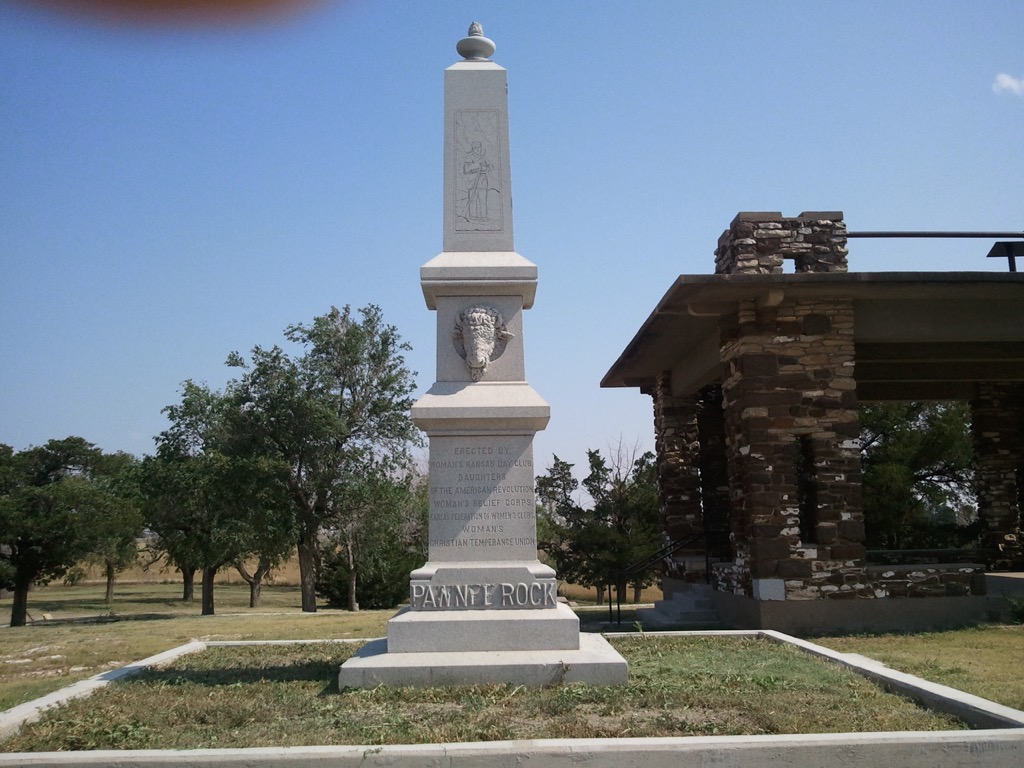
An icon symbolizing the midway point of the Santa Fe Trail, (an important mid nineteenth-century trade route winding from Missouri to New Mexico), the Pawnee Rocks serve as an excellent vantage point for viewing the plains below. Supposedly, Native Americans would use the pinnacle to scan their surroundings for bison or newcomers approaching the area.
17
Kentucky: Fort Boonesborough
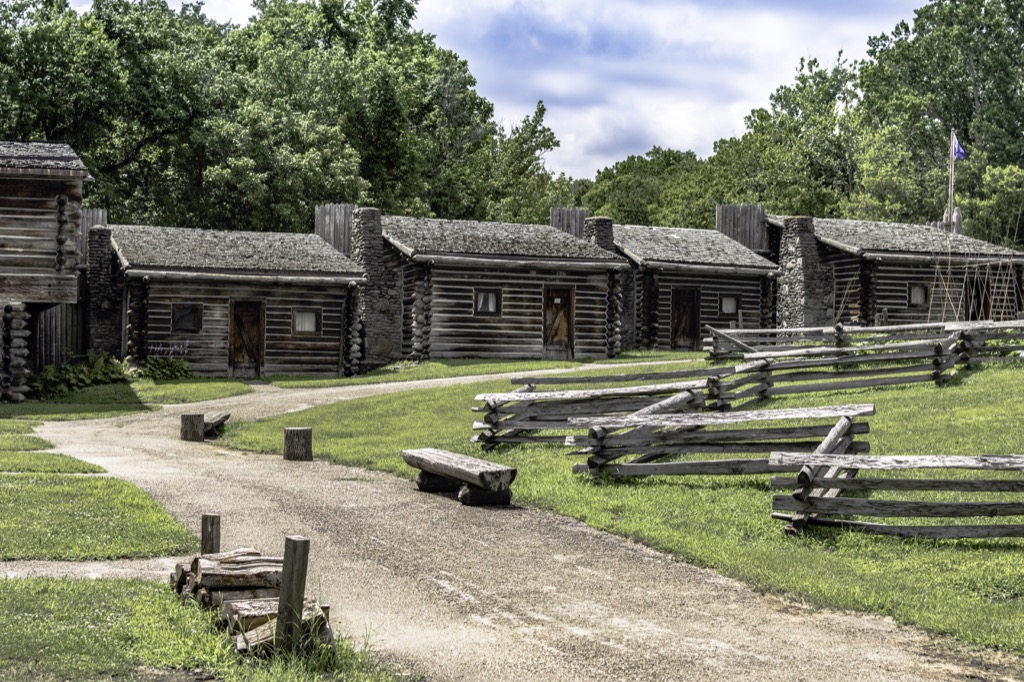
One of Kentucky’s very first settlements, Boonesborough was founded by—and consequently, named after—the legendary frontiersman Daniel Boone. Centuries after its founding, today’s visitors can experience and admire the simpler aspects of pioneer life. And for more on how Boone earned the legendary status he holds today, check out The Biggest Folk Hero in Every State.
18
Louisiana: New Orleans’ French Quarter
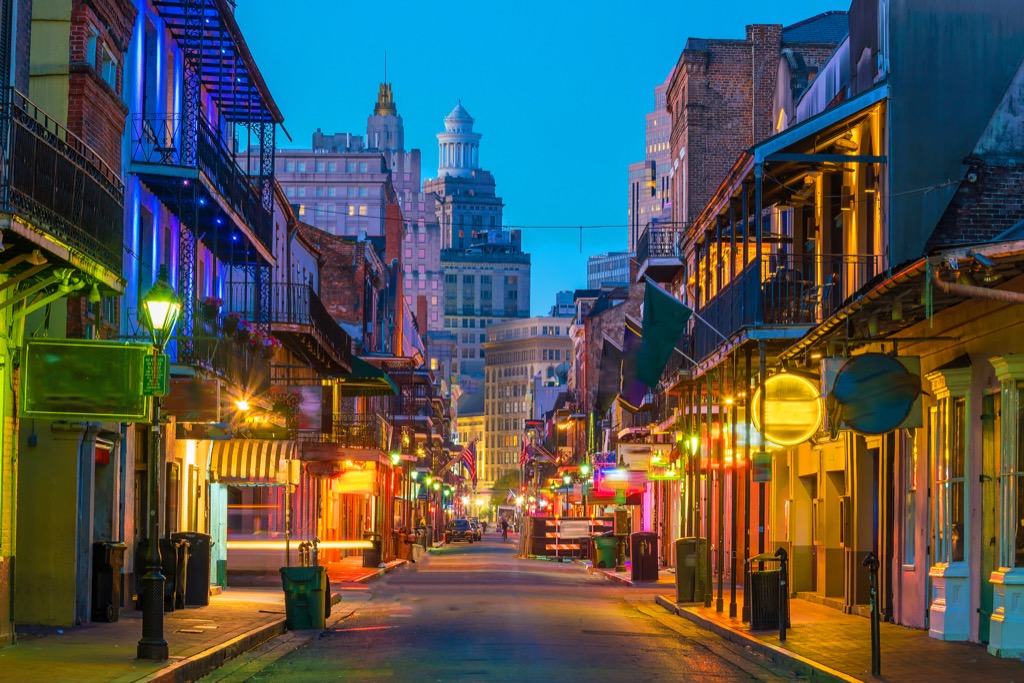
Bustling with energetic embodiments of tradition brought to life, New Orleans’ French Quarter is chock full of historic locations, from the Quarter’s oldest coffee stand, Cafe Du Monde, to the lively Preservation Hall jazz club, all pointing back to the port city’s heritage steeped in vibrant French culture. And to see where Cafe Du Monde and the rest of NOLA’s coffee shops stack up against other cities’ cafes, don’t miss The 50 Most Caffeinated Cities in America.
19
Maine: Cushnoc Archeological Site
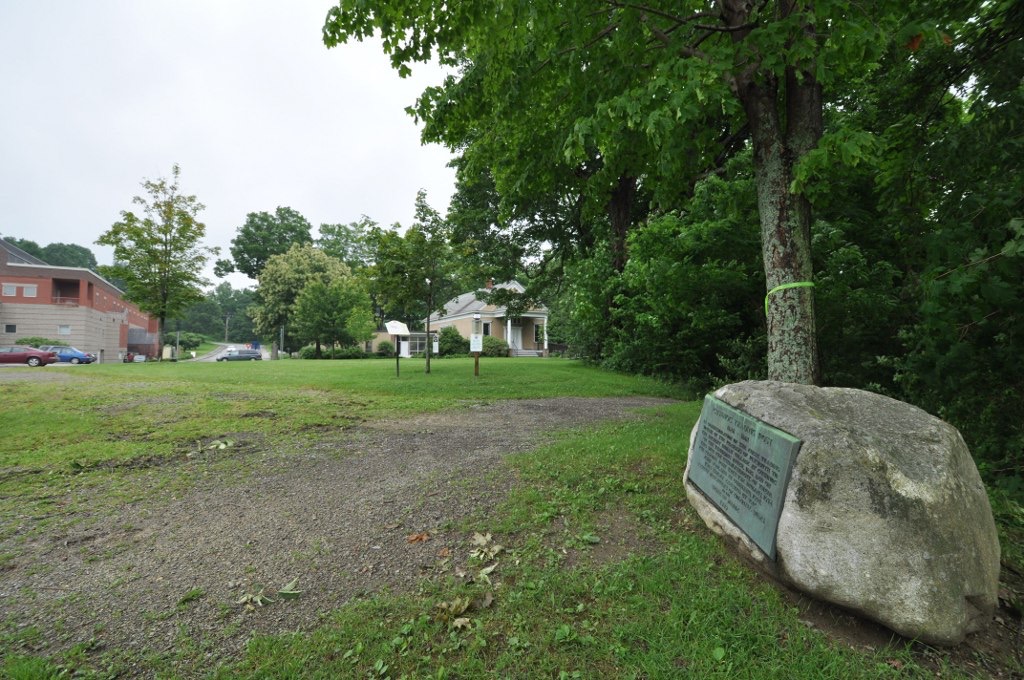
Once a colonial hub, a plaque at the now tranquil Cushnoc site serves to commemorate what was once one of the primary trading posts for seventeenth-century Plymouth Colony settlers. A 1980s excavation revealed artifacts like tobacco pipes, glass beads, and ceramics in the area surrounding the site.
20
Maryland: Fort McHenry
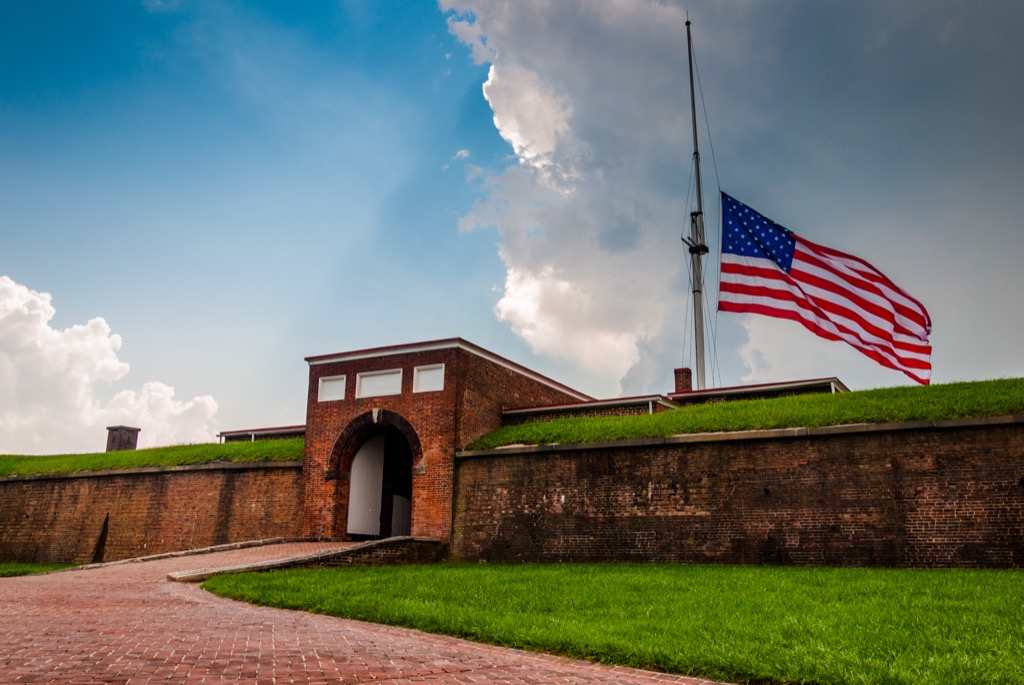
The ramparts of Fort McHenry are especially historic because they are the very walls that attorney and amateur poet Francis Scott Key strained to watch from a boat as the British bombarded the fort during the War of 1812. (You know: that time Britain tried—and failed—to win America back.) When the sun rose and Key saw that the Stars and Stripes were still resiliently waving from the flagpole, he felt inspired to write the poem that has now become “The Star Spangled Banner.” And for more on how our national anthem came to be, don’t miss the 20 “American” Traditions We Totally Stole from Other Cultures.
21
Massachusetts: Minute Man National Historical Park
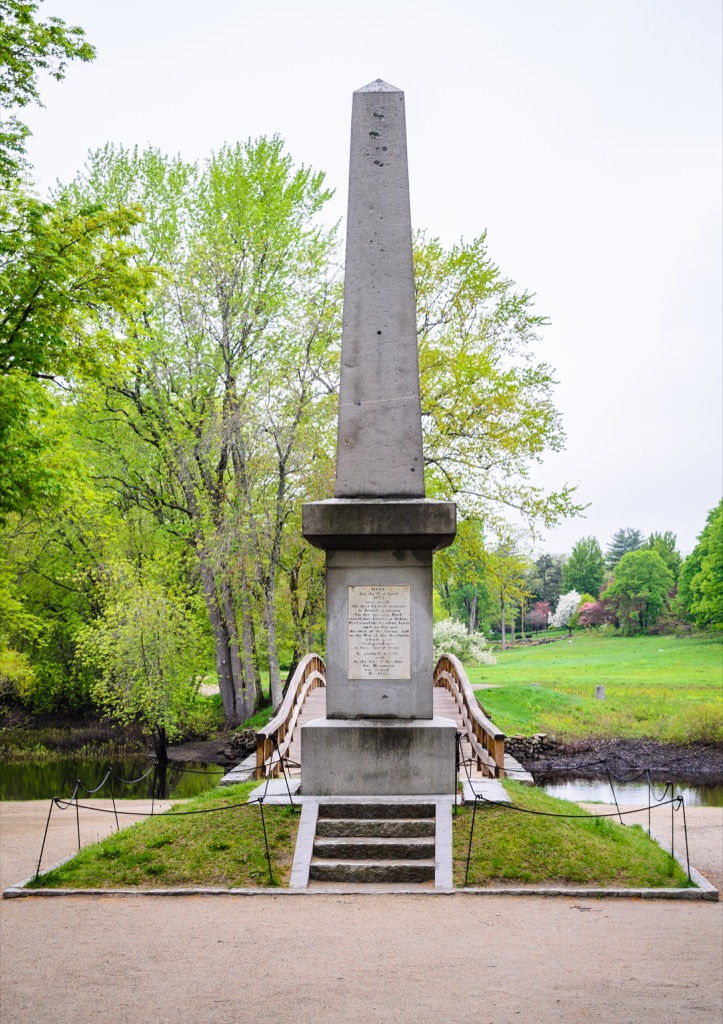
Yes, Massachusetts practically has more historical landmarks than people—but these exact coordinations hold the unique distinction of being the most historic. On this very ground, “the shot heard ’round the world” was fired in April 1775, initiating the Revolutionary War with the battle of Lexington and Concord. It is still hotly contested whether the first shot (memorialized by poet Ralph Waldo Emerson’s “Concord Hymn”) was actually fired by the British or the colonists. And for more on some of the greatest unreconciled debates of our nation’s history, don’t miss America’s 30 Most Fascinating Unsolved Mysteries.
22
Michigan: Henry Ford Museum
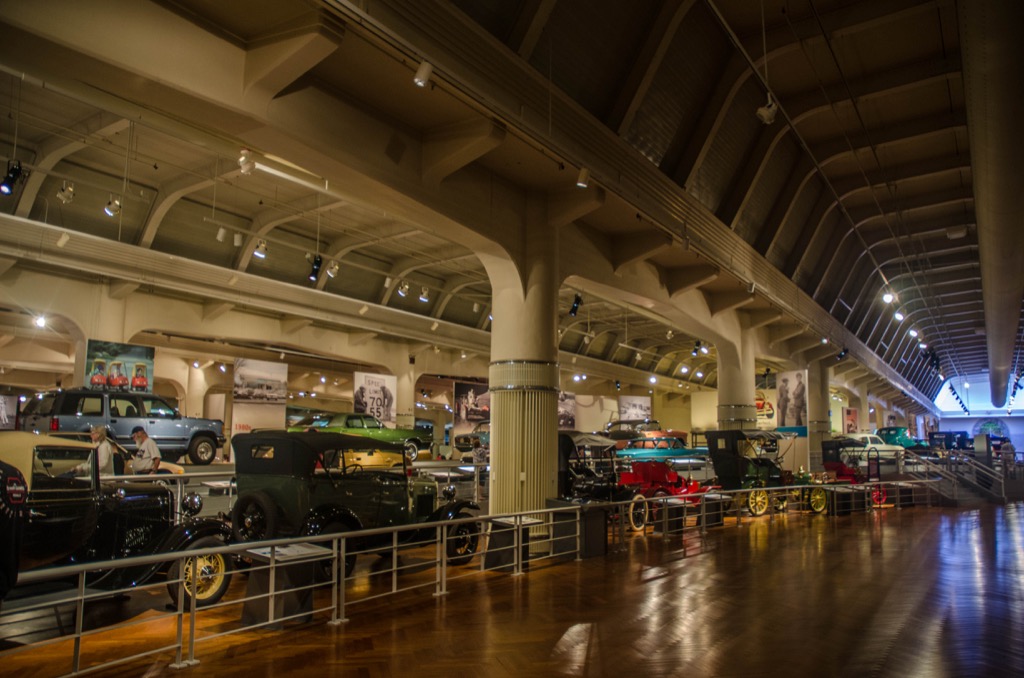
Although founding Ford Motor Company elevated him to an immensely wealthy, well-regarded status, Greenfield native Henry Ford never forgot his humble, rural roots—he believed history lessons didn’t do enough to emphasize the everyday lives of ordinary people. As such, Ford made it one of his life projects to continuously collect antiques and restore several old buildings, including the farmhouse and schoolhouse of his childhood. His mission gave birth to the Henry Ford Museum, which today holds one of the nation’s largest and most stratified collections of Americana.
23
Minnesota: Fort Snelling
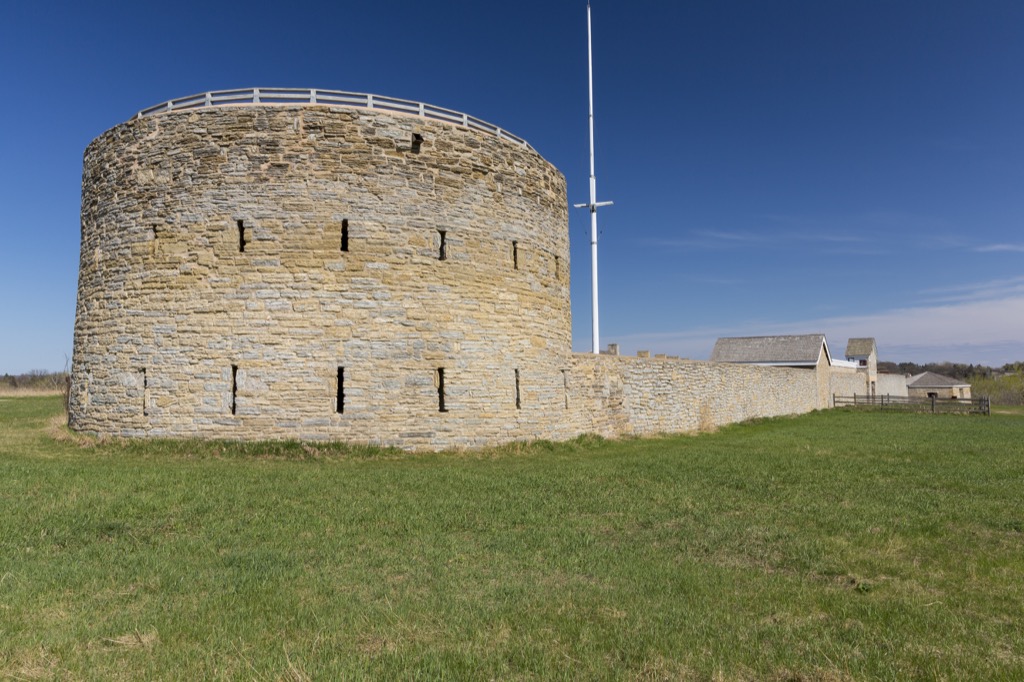
The grounds on which Fort Snelling (formerly known as Fort Saint Anthony) rests have played host to an assortment of events, from serving as an important trading site for Native American tribes (because of its convenient proximity to several major waterways, like the Mississippi and Minnesota Rivers) to later serving as a training center during both the Civil War and World War II.
24
Mississippi: Vicksburg National Military Park
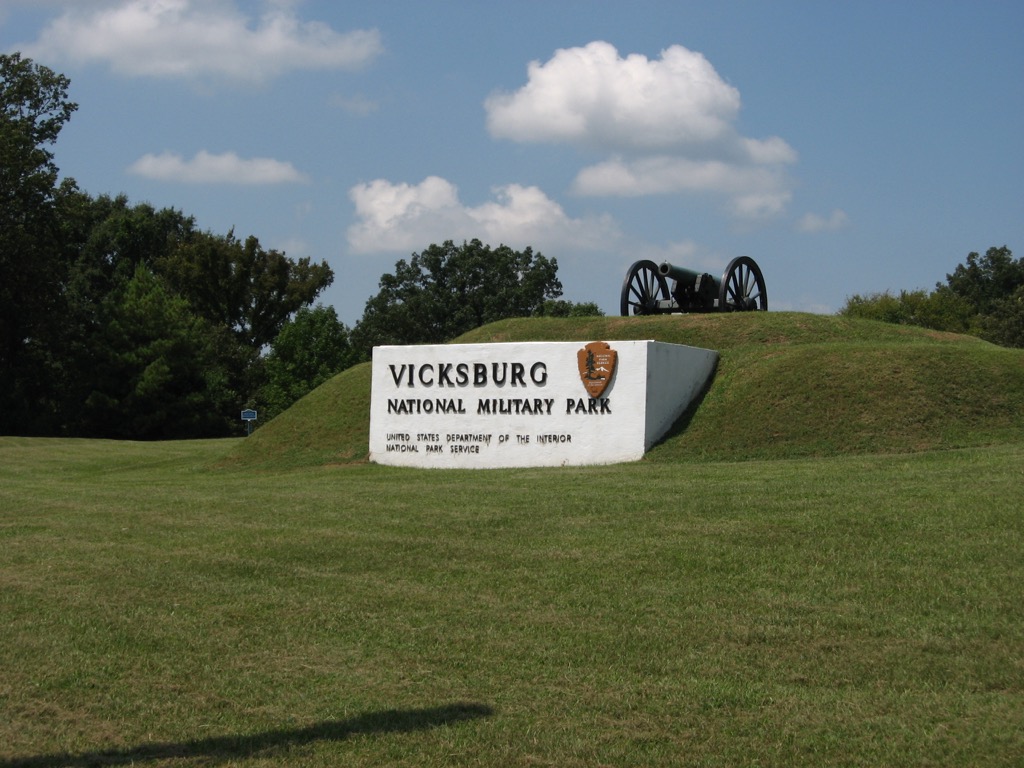
The siege and battle of Vicksburg, in which Union forces overtook the Confederate stronghold, marked one of General Ulysses S. Grant’s most brilliant military victories, according to historians. Remembered today as one of the Civil War’s bloodiest clashes, the battleground holds the distinction of being one of the most densely memorialized battlefields on the globe, with more than 1,340 monuments and other types of historic markers populating the military park.
25
Missouri: Wilson’s Creek National Battlefield
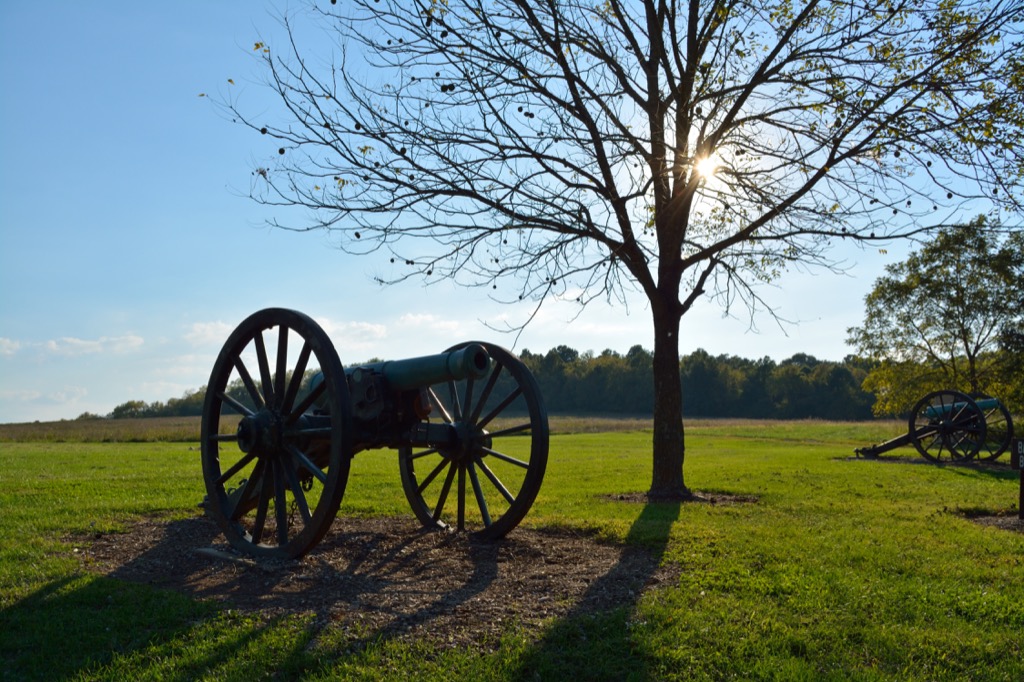
Considered the first major Civil War battle to occur west of the Mississippi River, the fighting at Wilson’s Creek in July 1861 also led to the first Union commanding officer’s death, with the loss of Brigadier General Nathaniel Lyon. Ultimately, the battle resulted in a heinous amount of bloodshed (approximately 2,300 casualties) bringing the unrest in Missouri to the forefront of the nation’s attention and becoming the state’s official entrance into the Civil War.
26
Montana: Little Bighorn Battlefield
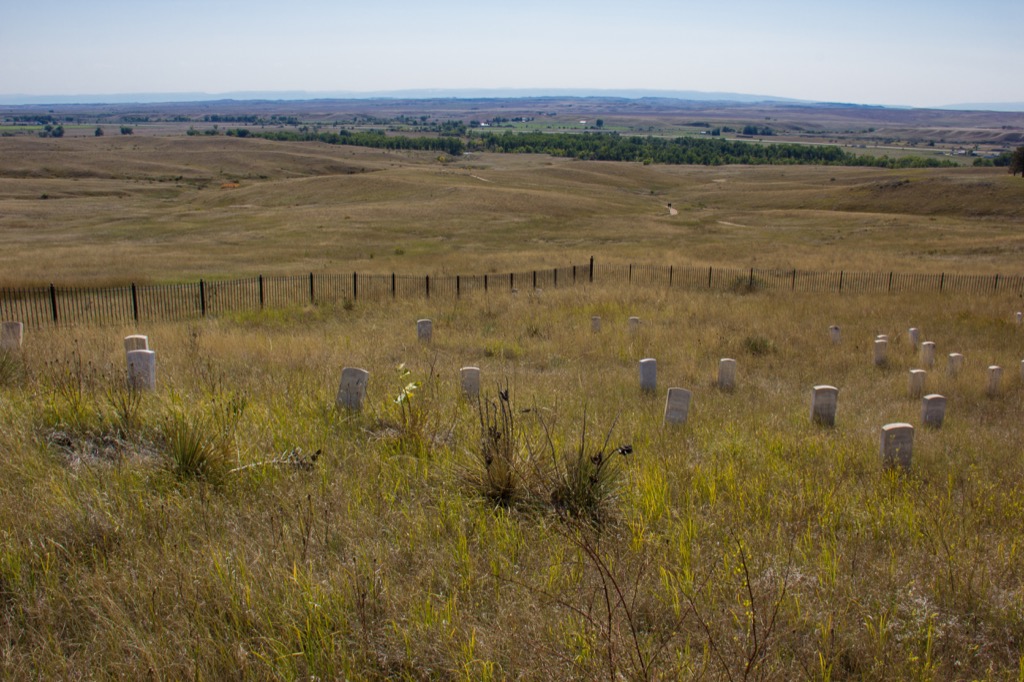
Little Bighorn was the site of General George Armstrong Custer’s most infamous battle, better known as “Custer’s Last Stand,” where the general and his entire cavalry regiment perished while fighting against a coalition of Native American tribes led by revered tactical chief Sitting Bull. Today, the National Park Service has memorialized the area in order to recognize the copious amounts of blood shed on both sides of the battle.
27
Nebraska: Chimney Rock
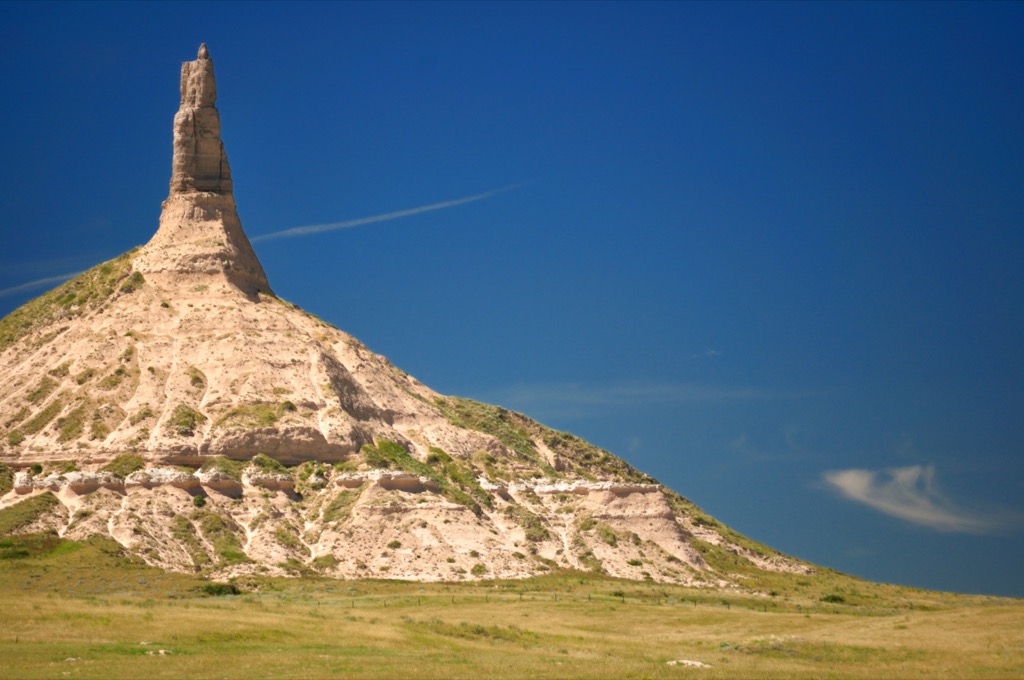
A landmark along the Oregon Trail, Chimney Rock is a bit of an anomaly—a unique natural formation rising nearly 325 feet into the air amidst the relatively flat surrounding plains. Countless nineteenth century pioneers gazed up in admiration at this lone rock as their covered wagon trains passed by en route to the West.
28
Nevada: Hoover Dam
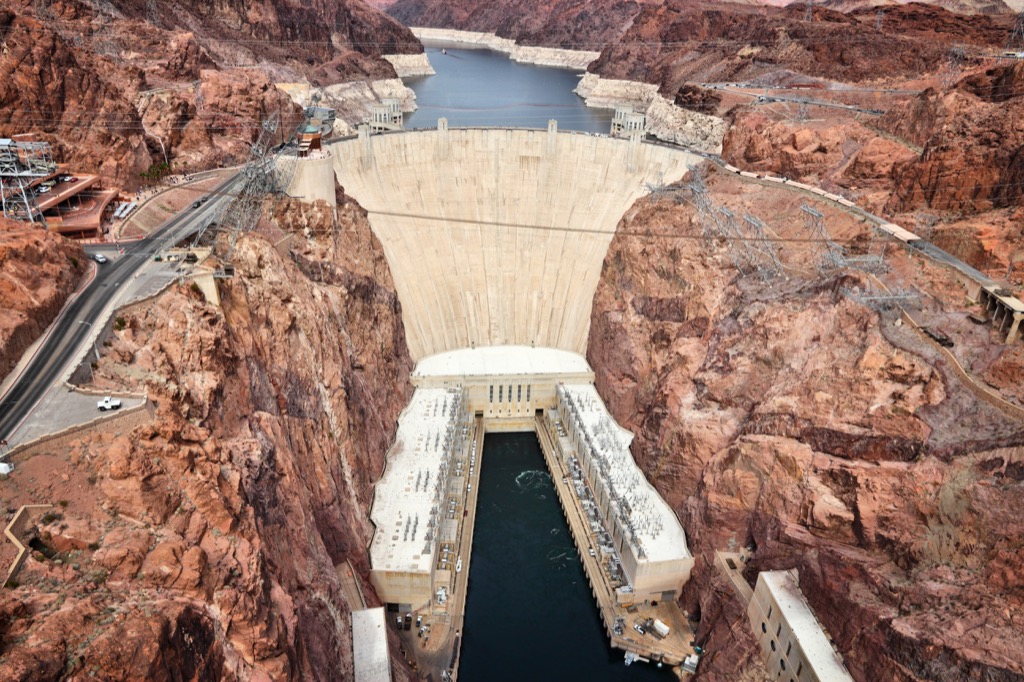
Coined Hoover Dam in honor of President Herbert Hoover, who commissioned the structure as a means of introducing more jobs while the nation was in the throes of the Great Depression, this dam produces an incredible 4 billion kilowatts of electricity a year. The dam is, unsurprisingly, considered among the most advanced engineering projects of its time.
29
New Hampshire: Mount Washington Cog Railway
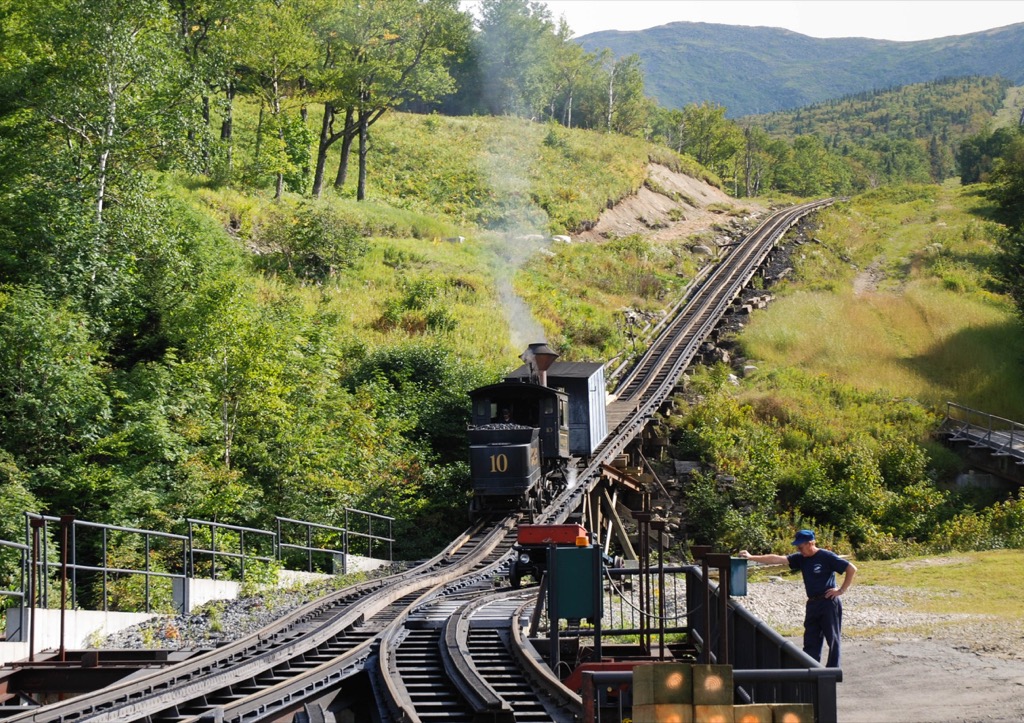
Take a ride on Mount Washington Cog Railway, the world’s first ever cog railroad, and get a close-up view of the highest mountain in the northern Appalachians, which reaches a staggering height of over 6,000 feet. For those craving an authentic nineteenth-century experience, the railway even offers the occasional ride in a coal-fired steam engine train, specially run late May through late October.
30
New Jersey: Monmouth Battlefield State Park
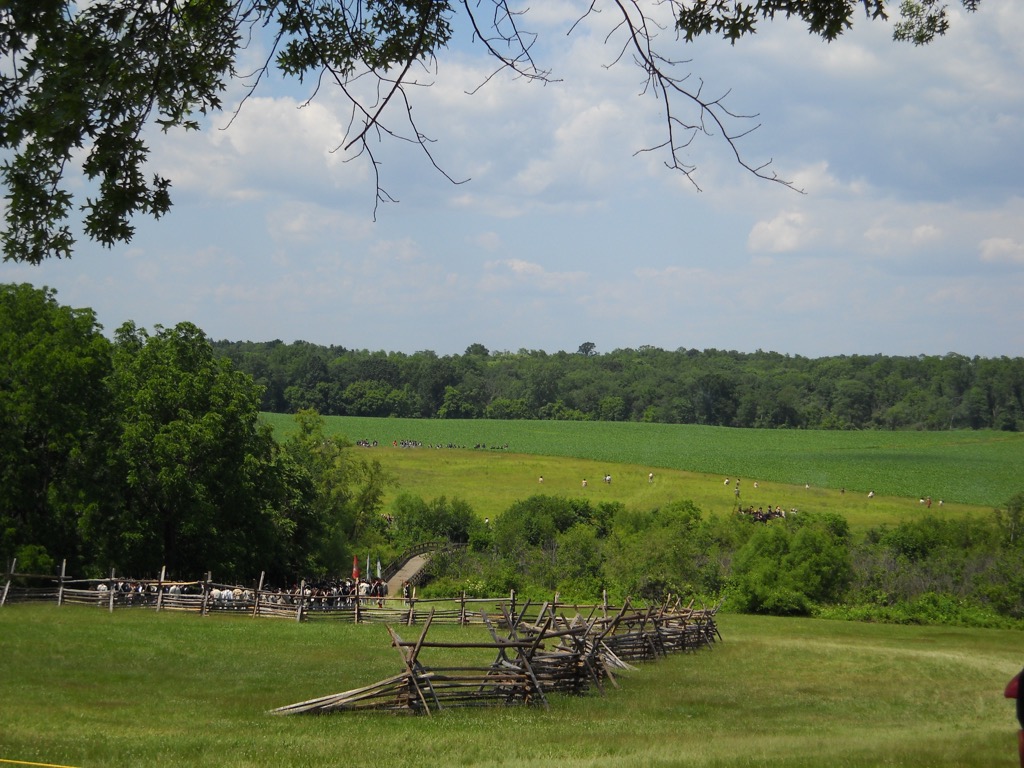
During one of the longest, bitterest battles of the Revolutionary War, colonial troops, led by General George Washington, fought on this site for an entire day, resulting in a draw with no clear winner. Every June, hundreds of people flock to Monmouth Battlefield to dress in traditional colonial garb and hold a reenactment in commemoration of the 1778 battle.
31
New Mexico: Chaco Culture National Historical Park
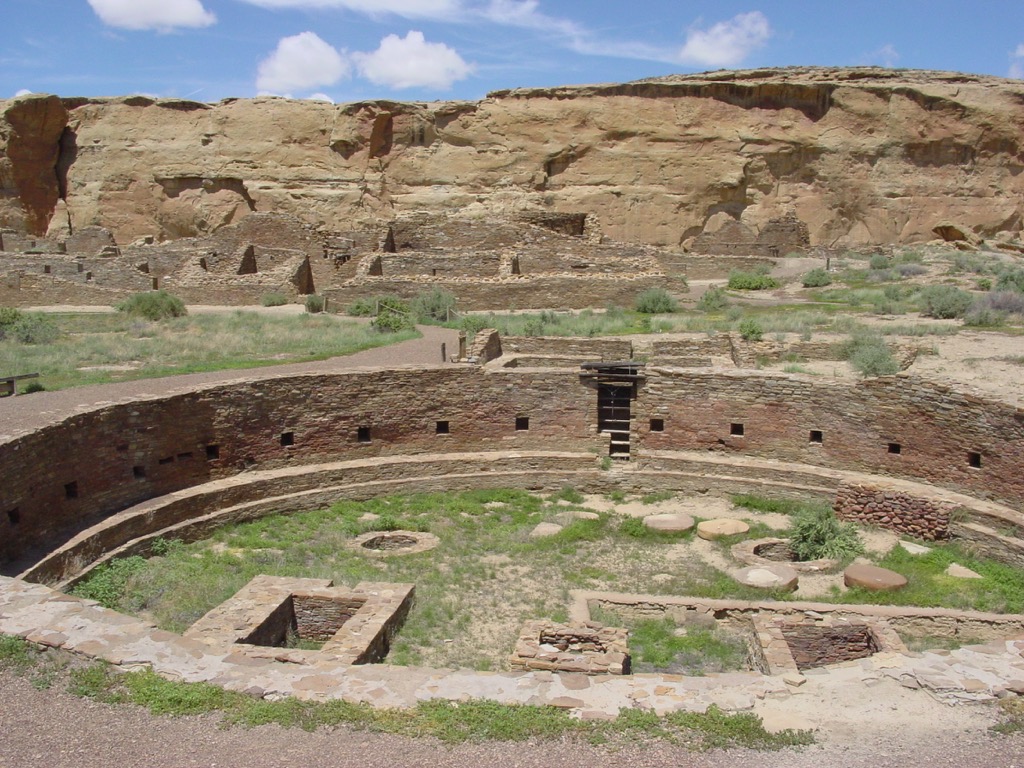
Stretching for over 53 miles across the desert regions of New Mexico and containing as many as 16 recognizable “great house” structures, Chaco Culture National Historical Park is the largest grouping of ancient pueblos in the American Southwest. In recognition of the significant amount of archaeological light these structures, which date as far back as the 9th century, shed on the lives of the Ancient Pueblo people, the site received UNESCO World Heritage Site status in 1987.
32
New York: Ellis Island
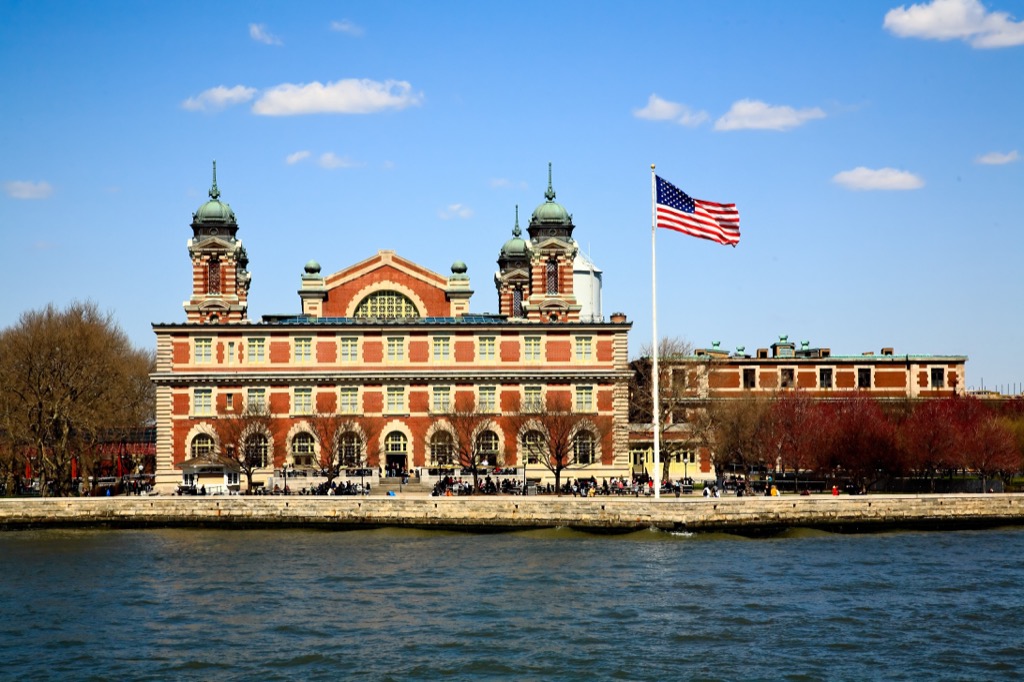
Ellis Island was once many of our ancestors’ first taste of the Land of the Free, where scores of immigrants had their papers processed and underwent physical examinations before being admitted into the country. Located near the Statue of Liberty (itself an incomparably historic location), Ellis Island has since opened a museum dedicated to preserving the stories of the experiences of the approximately 12 million people who passed through the processing center from 1892 to 1954 in search of the American Dream. And for more on the liberties America has to offer, don’t miss 23 Freedoms Americans Totally Take for Granted.
33
North Carolina: Wright Brothers Memorial
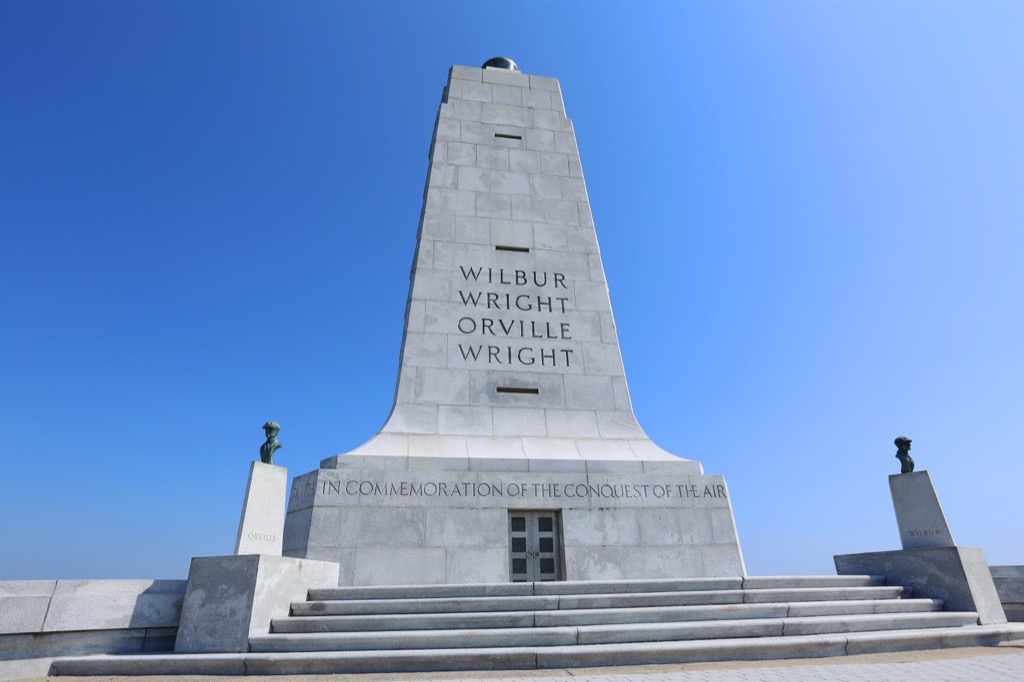
On Dec. 17, 1903, in Kittyhawk, North Carolina, Wilbur and Orville Wright’s names were etched into aviation history as the brothers became the first people in the world to successfully fly in their carefully crafted, newfangled invention: the world’s first airplane. The event is proudly commemorated on North Carolina license plates with the slogan, “First in Flight.”
34
North Dakota: Ronald Reagan Minuteman Missile State Historic Site
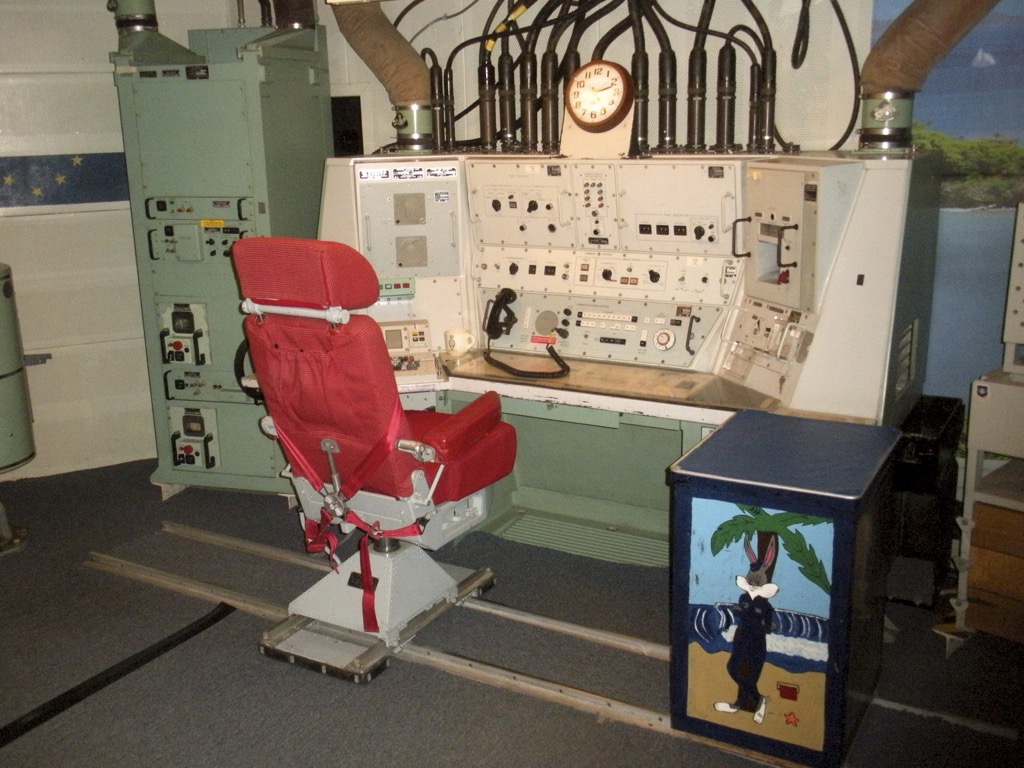
Though the Cold War would go down in history as a sort of ongoing stand-off in which no arms were actually fired, North Dakota’s Oscar-Zero Missile Alert Facility and November-33 Launch Facility have been preserved to showcase the U.S.’ diligence in preparing for the possibility of actual warfare breaking out between our country and the Soviet Union. The facilities contained intercontinental ballistic nuclear missiles that the resident Air Force officers were trained and prepared to release at a moment’s notice—not even knowing, according to CBS News, just how many missiles they had at the ready, or where they were specifically targeted.
35
Ohio: John Rankin House
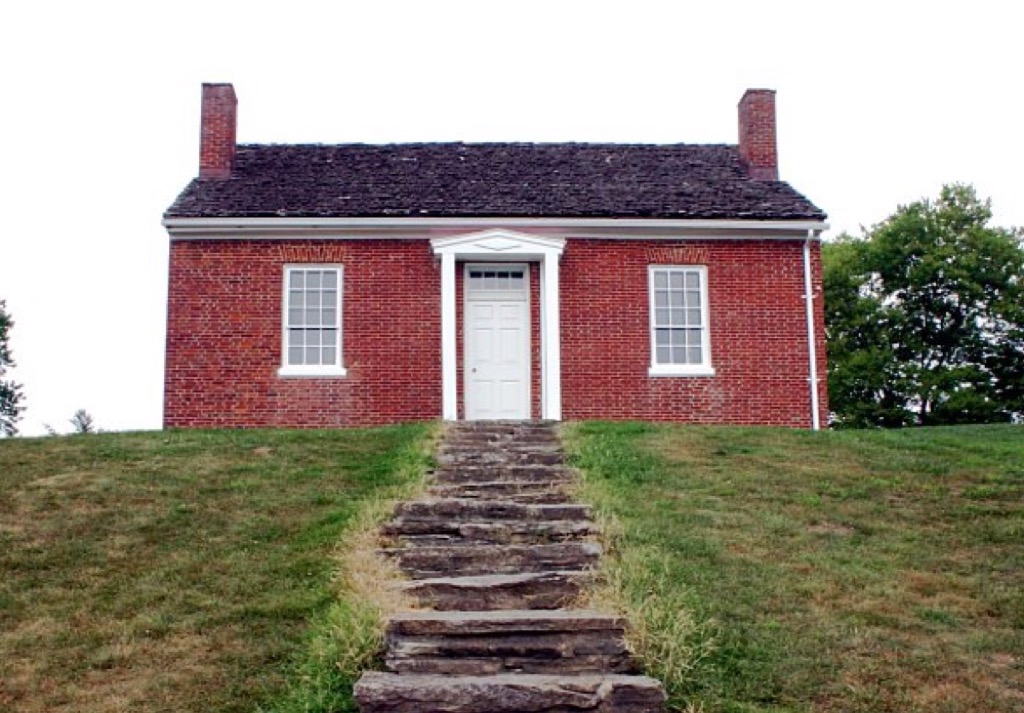
Owned by prominent abolitionist John Rankin, this house was among the first stops on the Underground Railroad, the covert system of safe houses that aided runaway slaves in escaping to the North in the pre-Civil War era. The National Underground Railroad Freedom Center estimates that over 2,000 slaves passed through the Rankin family’s home on the road to securing their freedom. Supposedly, it was visiting this house that inspired Harriet Beecher Stowe to write her tour de force abolitionist novel, Uncle Tom’s Cabin.
36
Oklahoma: Robbers Cave State Park
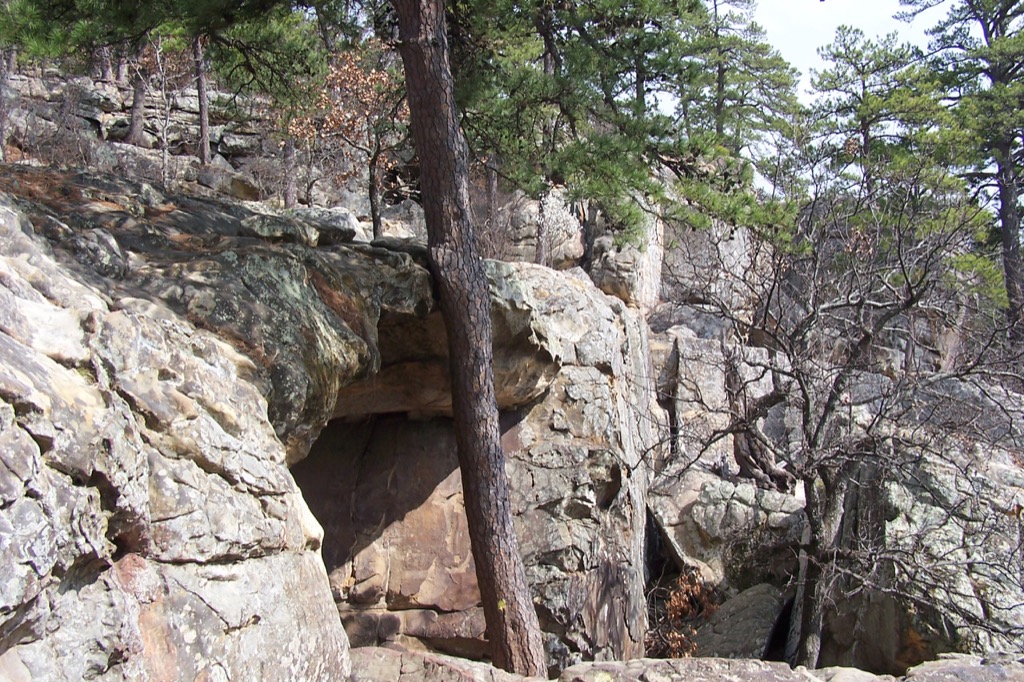
Infamous outlaws among the likes of Jesse James and Belle Starr are rumored to have frequented this 40-foot deep cave in the 1870s and ’80s, using it as a hide-out to safely scheme up their next raid. According to The Oklahoman, 285 gold wedding bands were found in the area surrounding the state park in the 1950s when curious adventurers sniffed out the outlaws’ hidden treasure.
37
Oregon: Fort Astoria
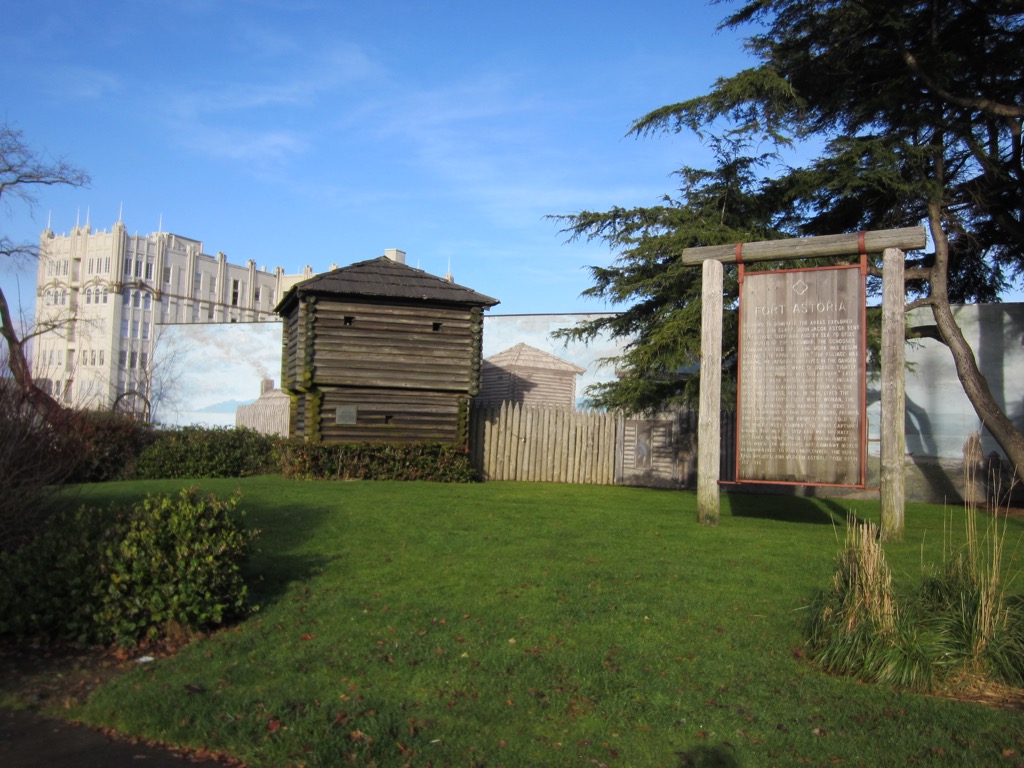
Located in Oregon’s oldest city and once the Pacific Fur Company’s main trading hub, Fort Astoria also has the unique (and somewhat confusing) distinction of having been both the first American-owned settlement on the Pacific Coast and the first British port on the Pacific Coast. (The War of 1812 caused the American-owned Pacific Fur Company to sell out to the British-owned North West Company shortly after establishing the fort, according to the Oregon History Project).
38
Pennsylvania: Independence Hall
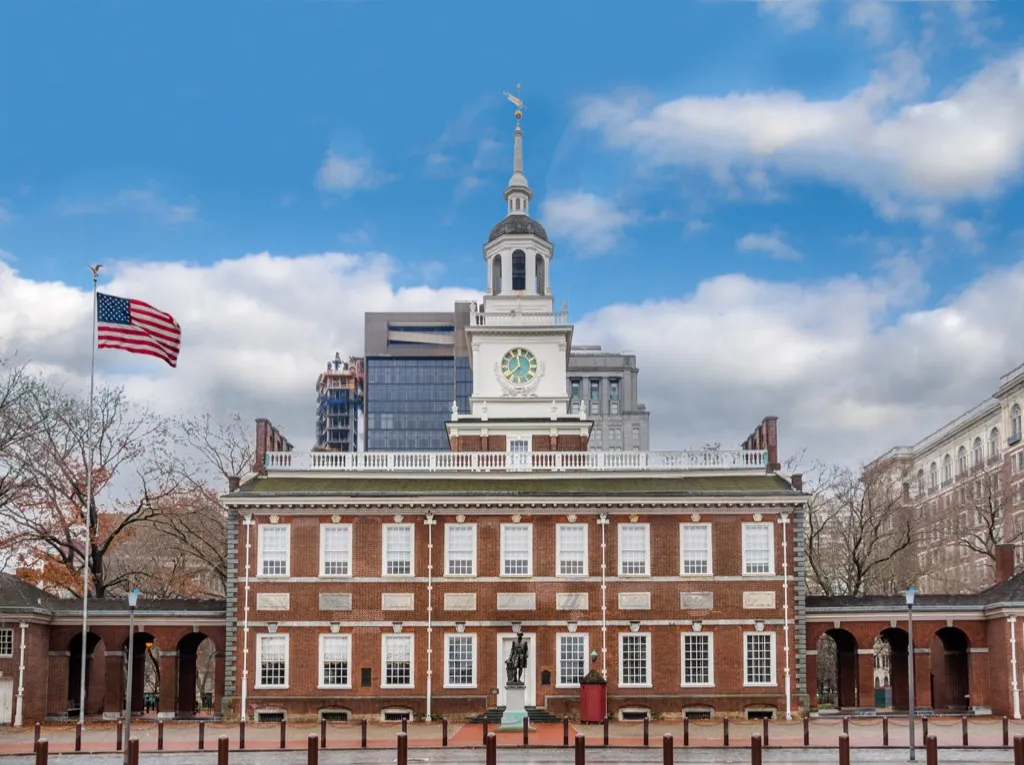
Teeming with historic locations like Gettysburg and significant statues like the Liberty Bell, Philadelphia is deeply steeped in our nation’s history—but Independence Hall, where the Declaration of Independence and the Constitution of the United States were signed, is irrefutably among the greatest legendary symbols for our nation. Today, the West Wing of the building contains the inkstand that was used to sign the Declaration of Independence, as well as an original draft of the Constitution. And for more on the importance of the 4th of July (the day in 1776 when the Declaration of Independence was officially signed), don’t miss 30 Significant Historical Events That Happened on July 4.
39
Rhode Island: Slater Mill Historic Site
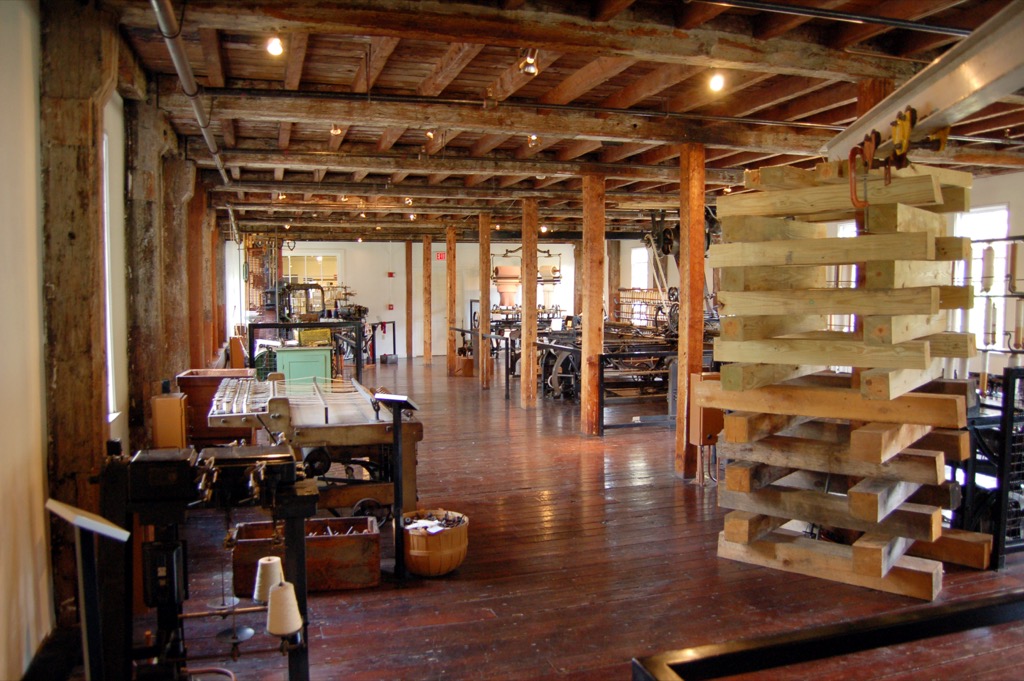
Did you know that the tiniest state in the Union actually played one of the most monumental roles in jumpstarting America’s Industrial Revolution? Visit Pawtucket to see the birthplace of the nation’s very first textile mills, where merchant Samuel Slater (later nicknamed the “Father of the American Industrial Revolution”) designed and put into practice America’s very first water-powered cotton spinning mill in the 1790s—and the rest of the country soon followed suit.
40
South Carolina: Fort Sumter
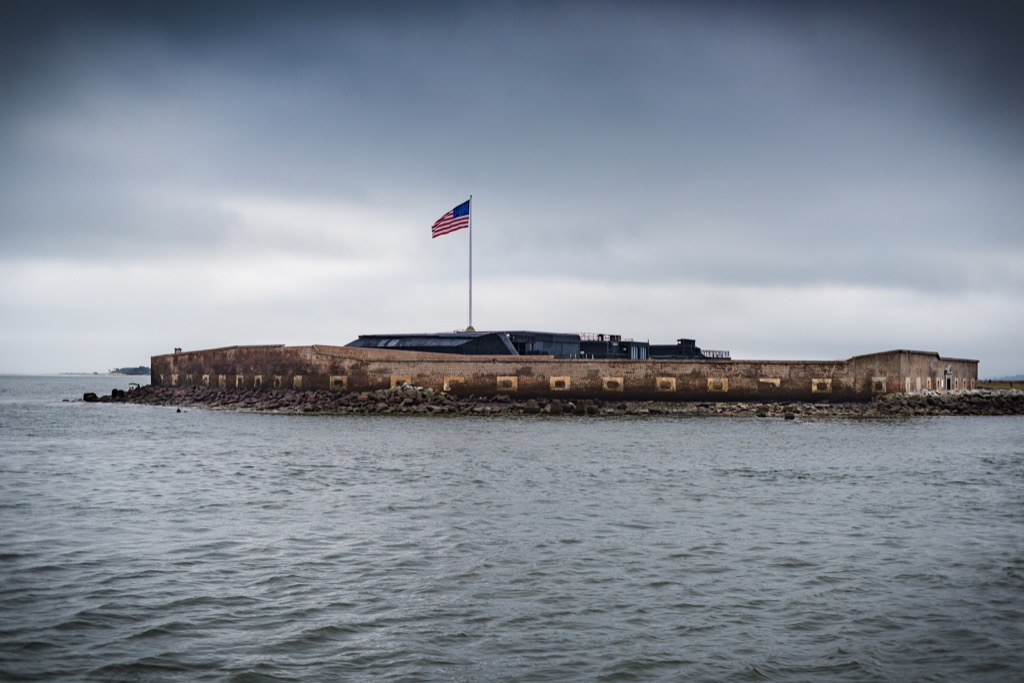
On April 12 and 13, 1861, the first shots of the Civil War were fired at Fort Sumter, beginning the four-year war that would rend the nation in two. Union Major Robert Anderson had been occupying the island fort for four months, and South Carolinian militia forces decided it was finally time to take back what (they felt) was rightfully theirs. After an artillery fire exchange lasting a reported 34 hours, Anderson, outnumbered by the militia and rapidly depleting his resources, surrendered, conceding the first victory of the war to the Confederacy.
41
South Dakota: Mount Rushmore
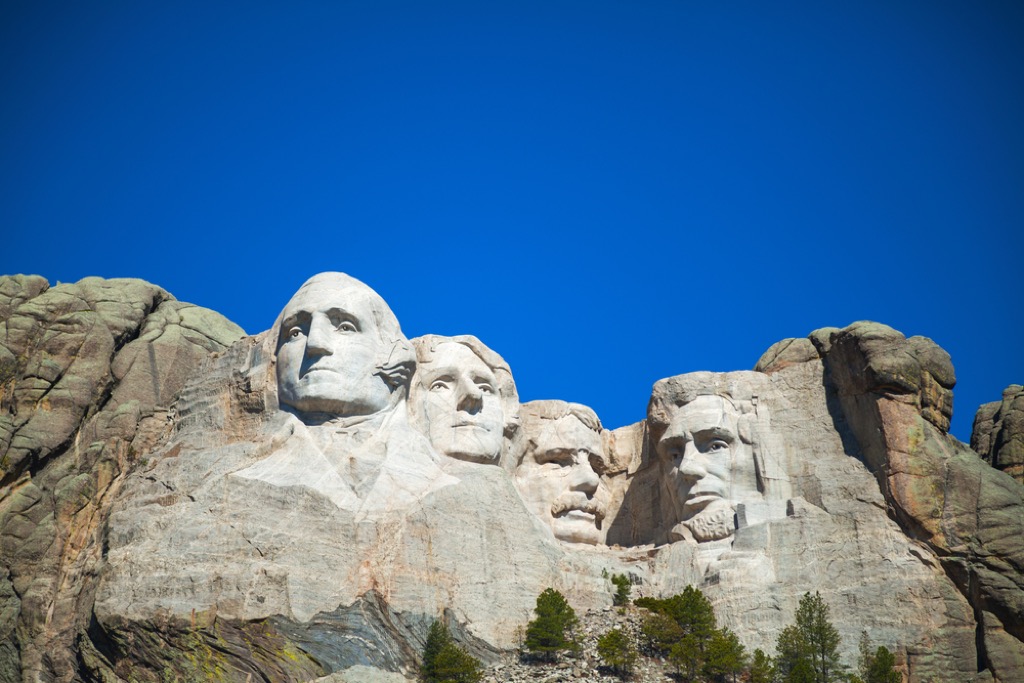
Jutting out from the stoic Black Hills of South Dakota are these 60-foot engravings of four of the most influential presidents in our nation’s history. According to the National Park Service, Mount Rushmore’s designer and sculptor, Gutzon Borglum, chose these four men because of their distinctive representations of different events: George Washington, for founding the nation; Thomas Jefferson, for aiding the nation’s burgeoning growth; Theodore Roosevelt, for cultivating the nation’s economic development; and Abraham Lincoln, for, against all odds, preserving the nation.
42
Tennessee: Fort Donelson National Battlefield

A coveted military vantage point due to its prime location on the Cumberland River (an ideal avenue for transporting both soldiers and supplies), the Union targeted and attacked the Confederate forces stationed at Fort Donelson in February 1862. The Confederates fought back but soon surrendered, earning Union General Ulysses S. Grant his first significant victory in the Civil War and making Tennessee more vulnerable to the Union.
43
Texas: The Alamo
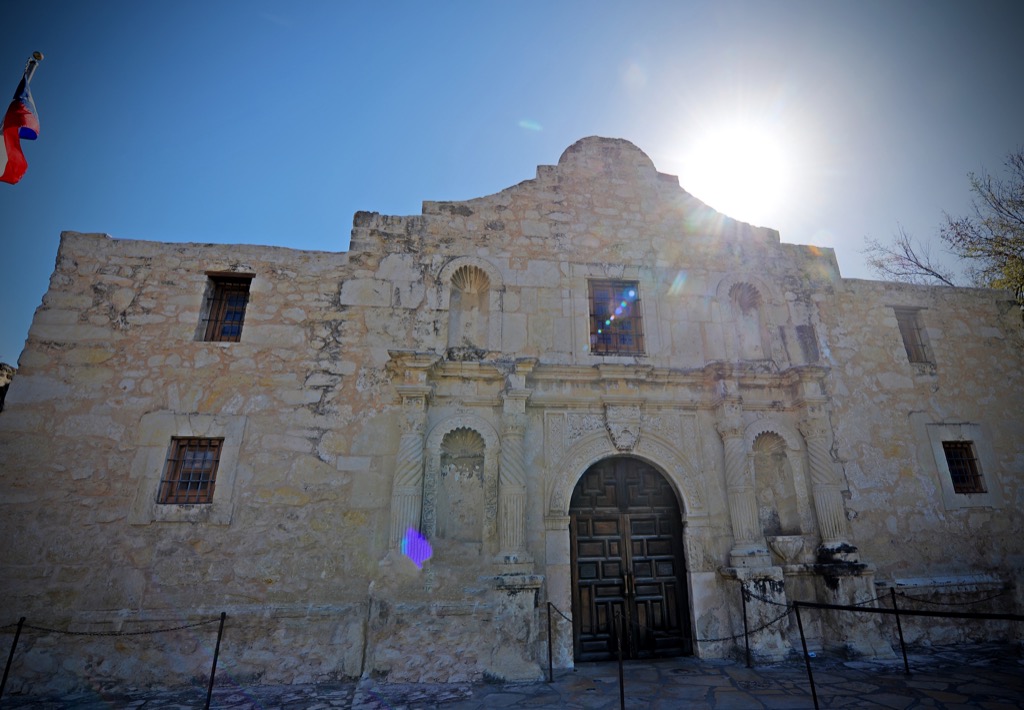
San Antonio’s former Spanish mission became the site of a siege and bloody battle in the midst of Texas’ fight for independence from Mexico in 1835. Commander William Barrett Travis and his 200 men, including legendary frontiersmen James Bowie and Davy Crockett, held their ground against Santa Anna’s military forces (numbering 1,800 or more soldiers) for 13 days before finally succumbing. Though Travis and his men were defeated, the Battle of the Alamo bought the rest of the Texas forces time to gather and prepare themselves for the oncoming Mexican Army. Texas would go on to win the war later that year, rushing into the final battle with resounding cries of “Remember the Alamo!”
44
Utah: The Golden Spike National Historic Site
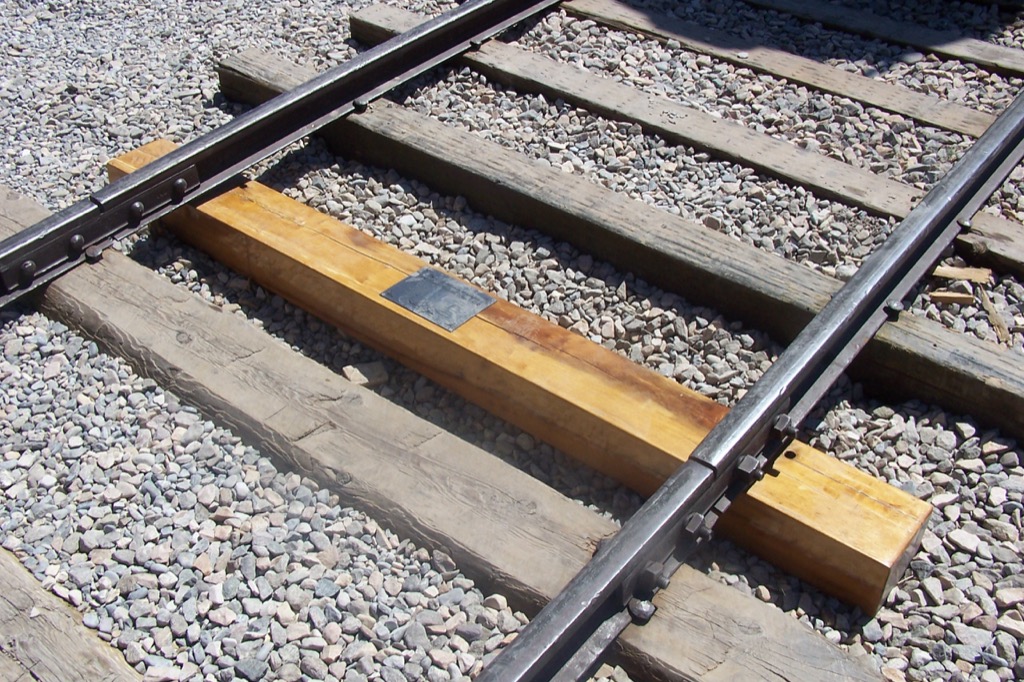
On May 10, 1869, a rail worker assisted Central Pacific Railroad President Leland Stanford with driving a 17.6 carat gold spike into the railroad tie at Promontory, in a monumental symbolization of the completion of the nation’s first transcontinental railroad—a remarkable feat that had taken thousands of laborers six painstaking years to complete.
45
Vermont: The Old Constitution House
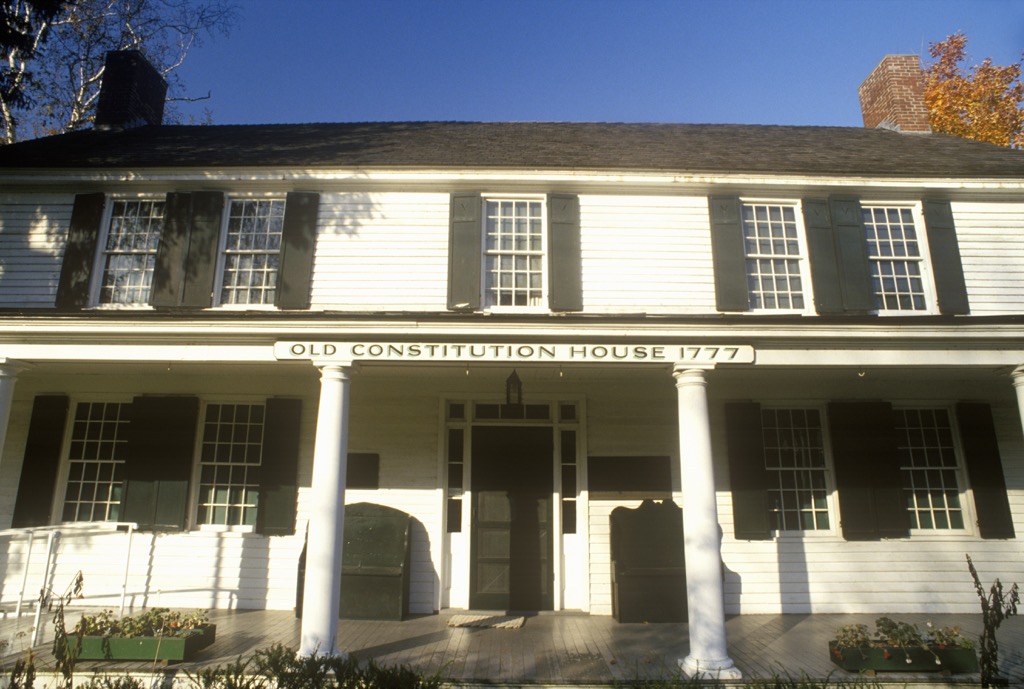
Once a lively tavern, the site now known as The Old Constitution House was the location where the people of Vermont, frustrated by ridiculously high taxation from the government of New Hampshire and irritated by repeated claims of ownership by the British, signed a constitution in 1777, declaring themselves to be the “Free and Independent State of Vermont.” Vermont was governed by this constitution, which, among its notable qualities, was the first American constitution to explicitly prohibit slavery, until 1791, when it joined the ranks of the United States.
46
Virginia: Jamestown
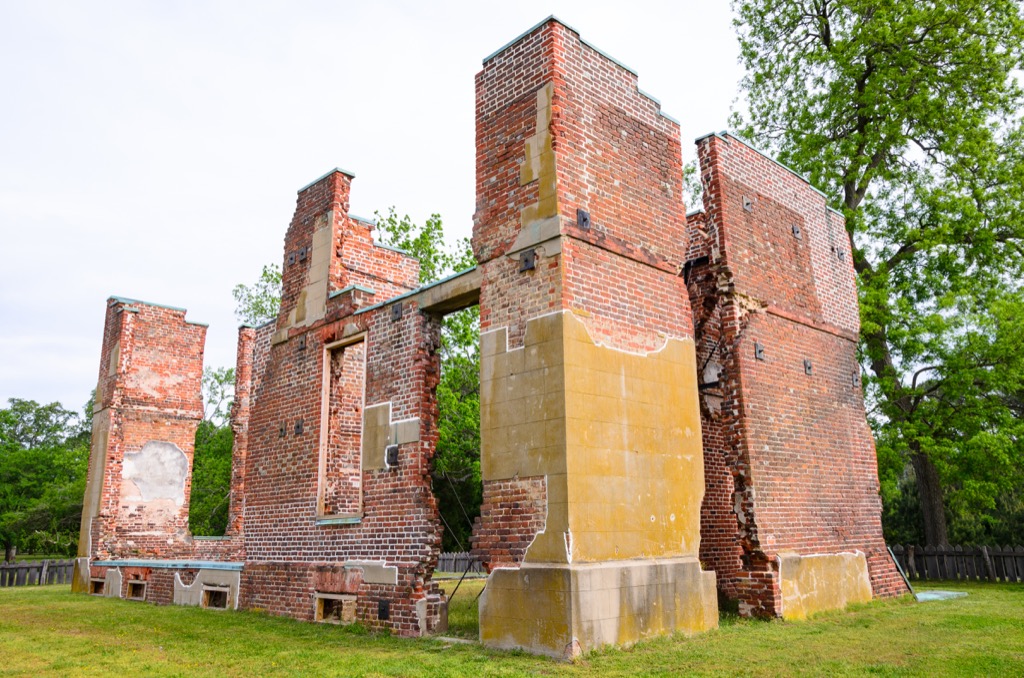
As the state’s popular tourism slogan goes, Virginia is for lovers, but more specifically, history lovers. That’s because Jamestown, Virginia, (named after James I, the British king at the time) was the birthplace of the colonies, where American ground was first broken by John Smith and his cohorts in 1607. While times were undoubtedly strenuous for these early colonists, from learning how to tend the soil to battling diseases, they resiliently persevered. And for more on the truth about how Jamestown came to be, don’t miss 30 Outdated History Lessons That Will Make You Cringe in 2018.
47
Washington: Mount St. Helens National Volcanic Monument
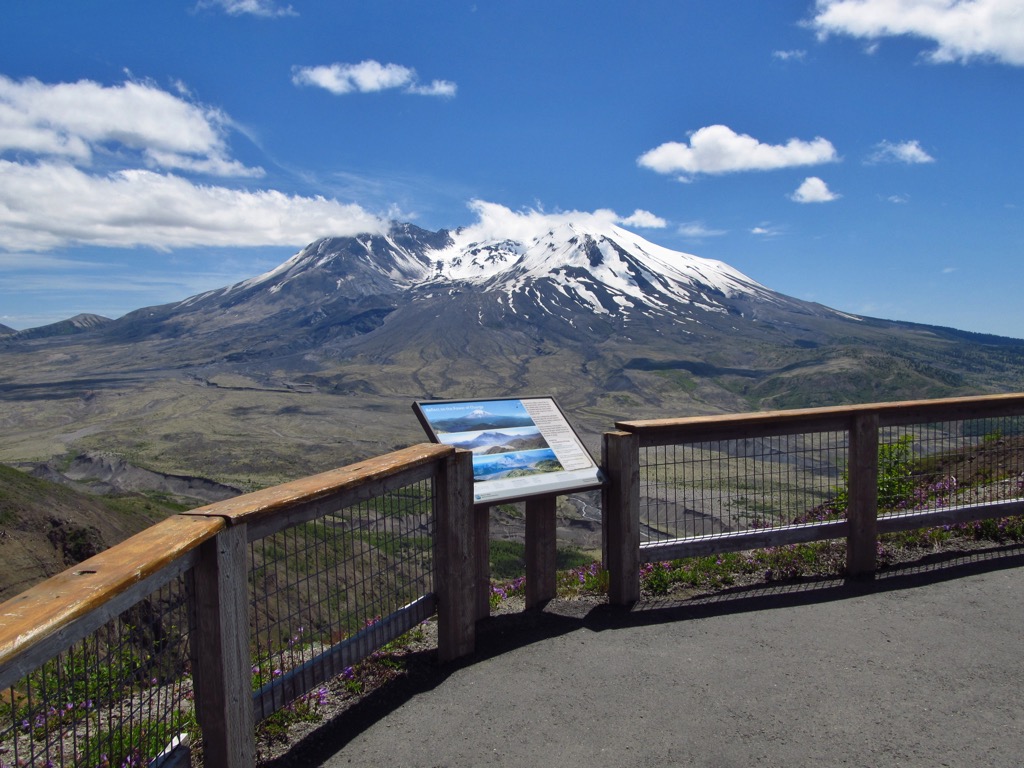
At the peak of Mount St. Helens, a chasmic crater is all that’s left to show for the 1,300 feet of mountaintop that once rested at the crest of the volcano before it erupted, without warning, on May 18, 1980. The eruption was devastating, by all accounts—the Atlantic reports that the eruption set into motion the “largest landslide in recorded history,” destroying nearly 150 square miles of forestland and, most tragically, killing 57 people.
48
West Virginia: Beckley Exhibition Coal Mine
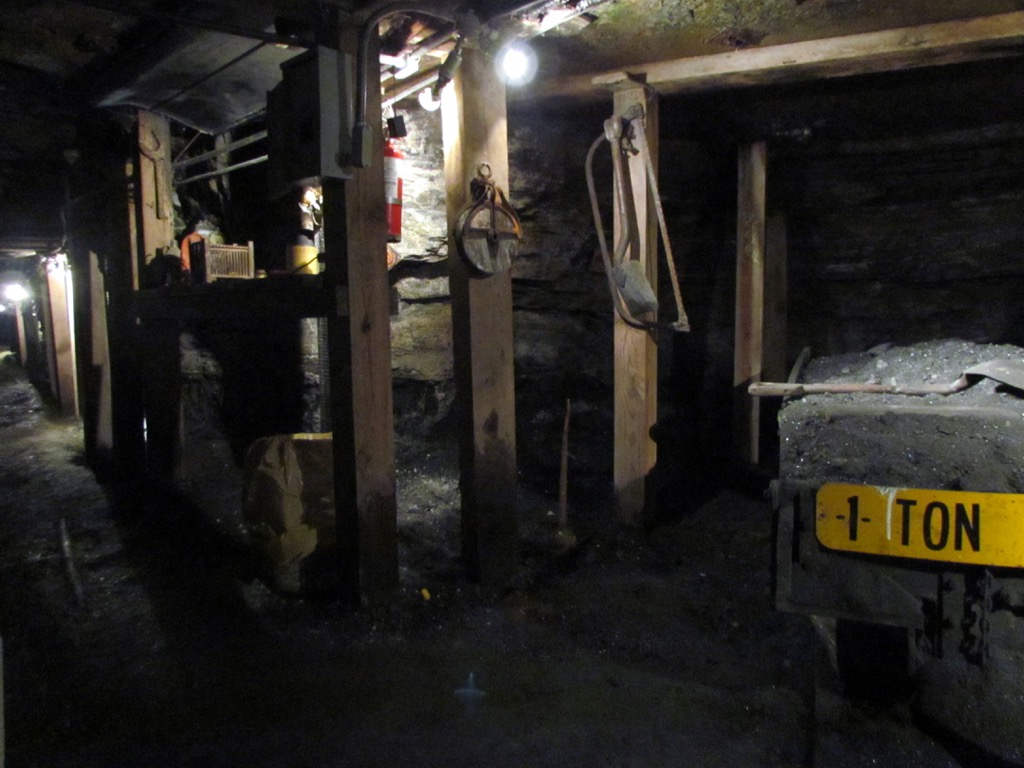
Since the mid-1800s, coal mining has played an integral role in West Virginia’s economy. Beckley Exhibition Coal Mine showcases a preserved early twentieth-century coal mine so that today’s generations can appreciate the grueling, oftentimes harrowing work demanded of the state’s coal miners.
49
Wisconsin: Aztalan State Park
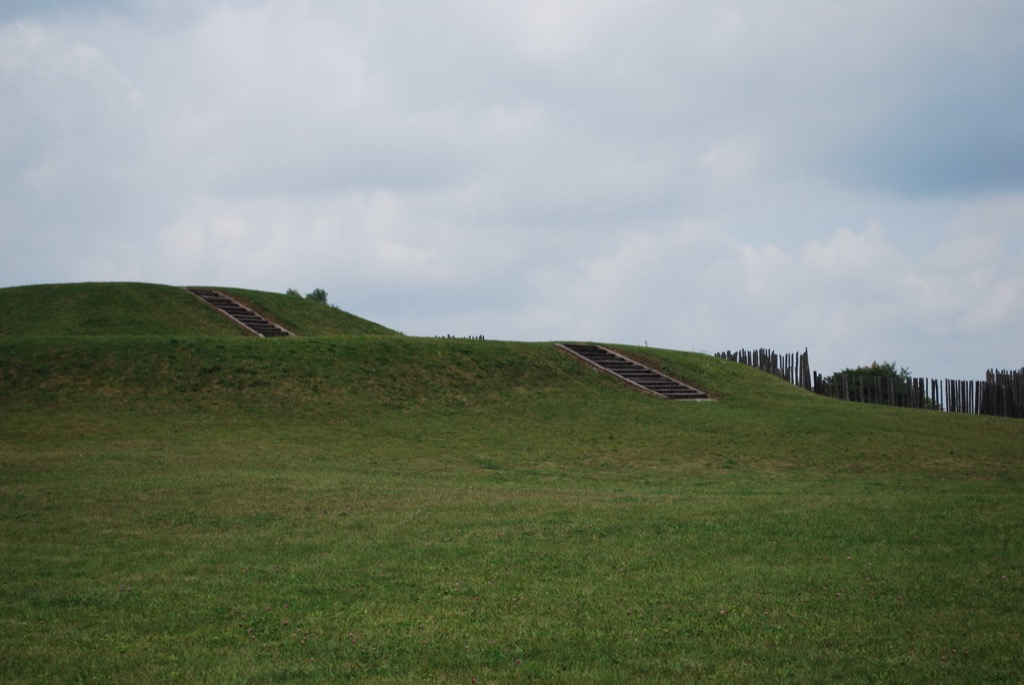
The archaeological key to understanding some of Wisconsin’s most ancient native peoples lies inside the confines of Aztalan State Park. The 172-acre park protects the remains of the flat-topped, rounded-pyramid-esque mounds constructed by the Misssissippian village’s inhabitants between 1000 and 1300 A.D.
50
Wyoming: Yellowstone National Park
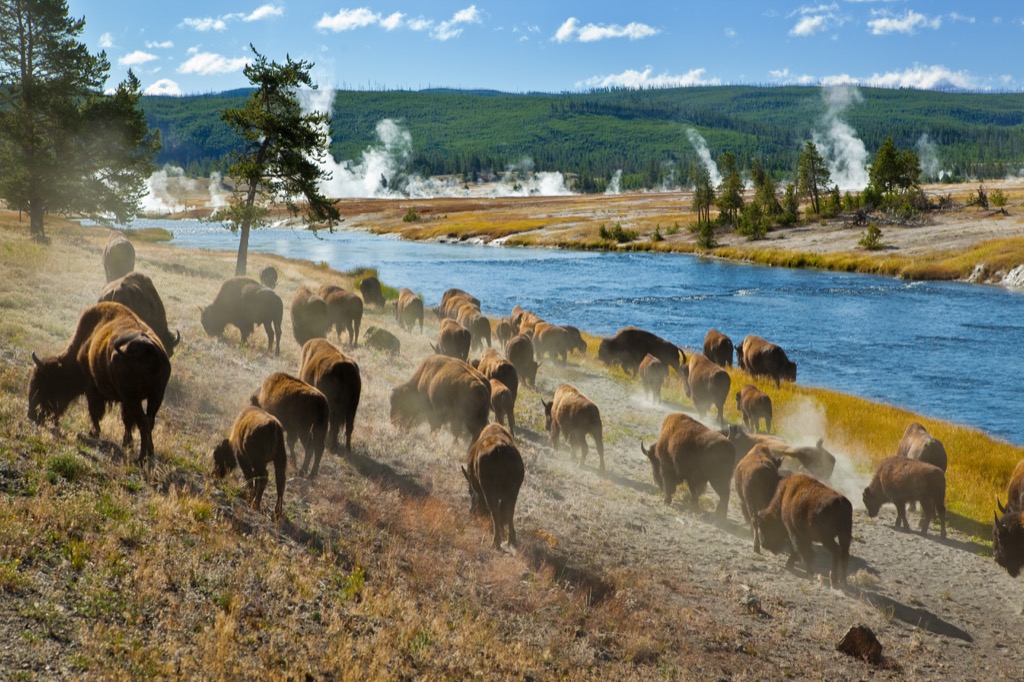
Heralding the beginnings of the nation’s conservation movement, Yellowstone, home to the awe-inspiring, somewhat punctual geyser, Old Faithful, became America’s (and arguably, the world’s) first national park in 1872, by order of President Ulysses S. Grant. Replete with canyons, hot springs, and an abundant range of wildlife, the nearly 3,500 square miles of park (which extends into Montana and Idaho, but is mostly located in Wyoming) remain among the best-preserved land of the American Wild West. And for ideas on more breathtaking locations in our nation that you should visit, don’t miss the 30 Enchanting Hideaways in the U.S. You’ve Never Heard of.
To discover more amazing secrets about living your best life, click here to sign up for our FREE daily newsletter!